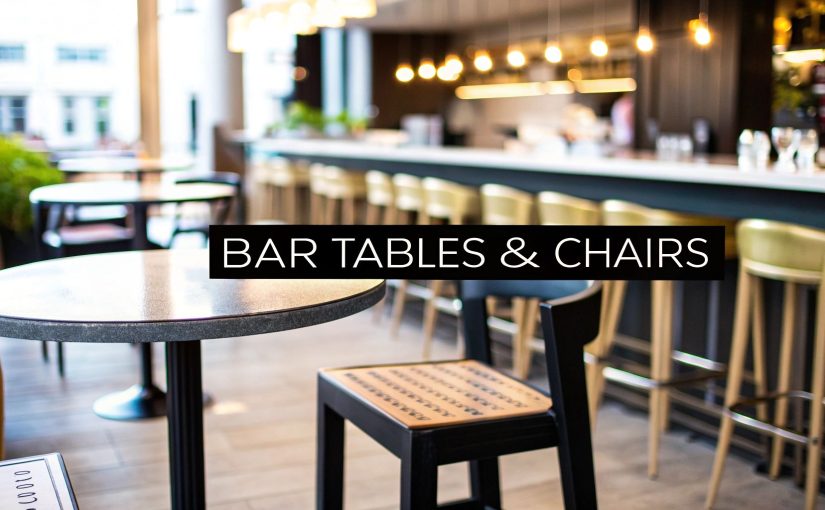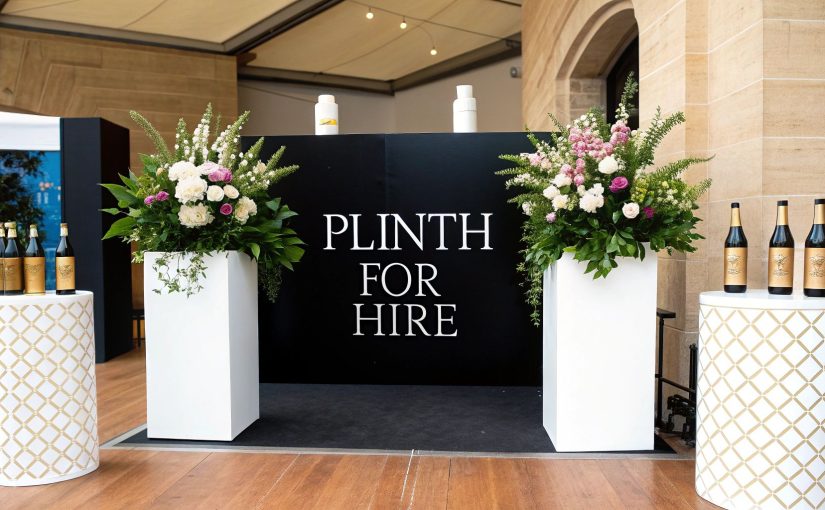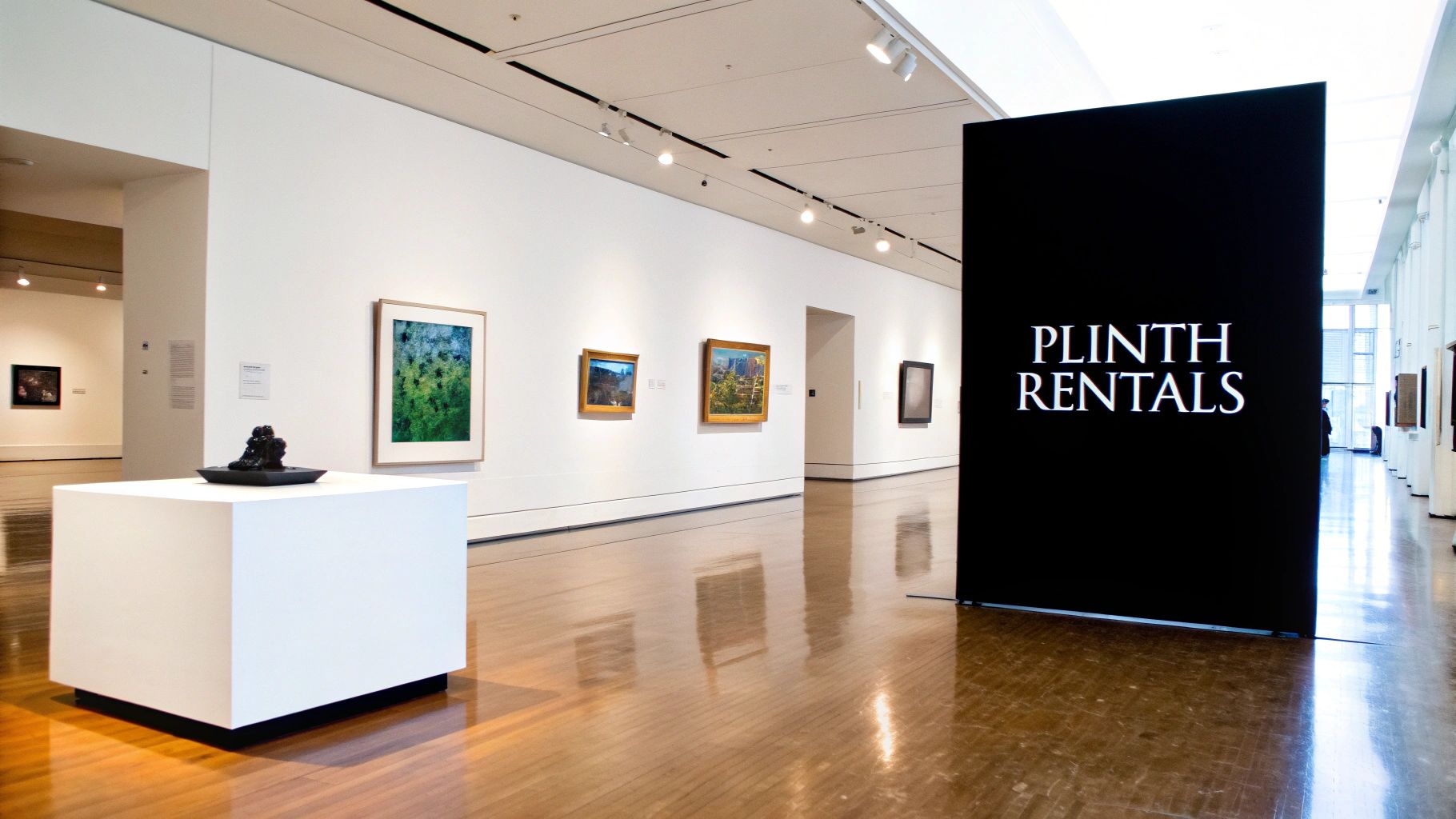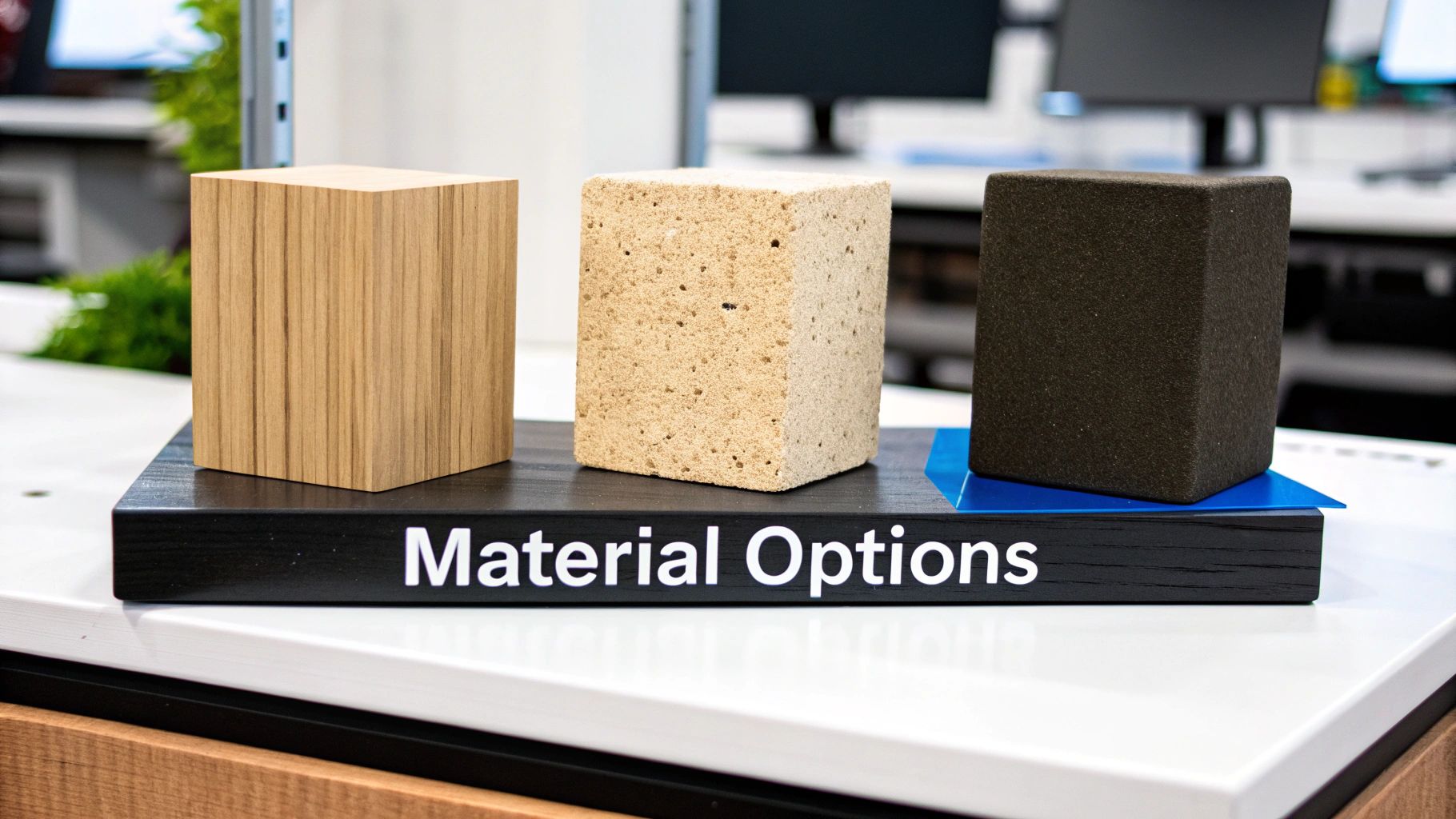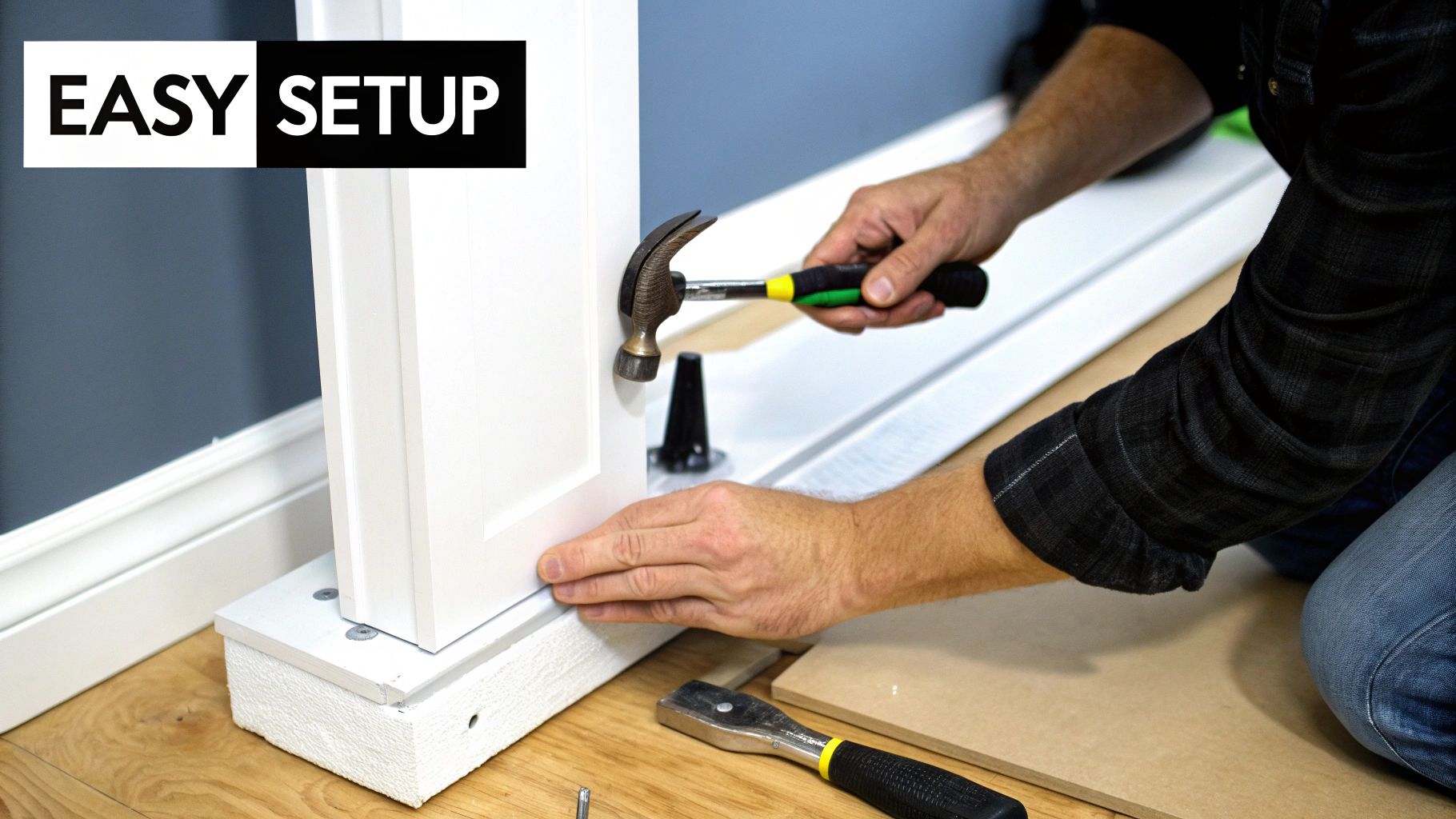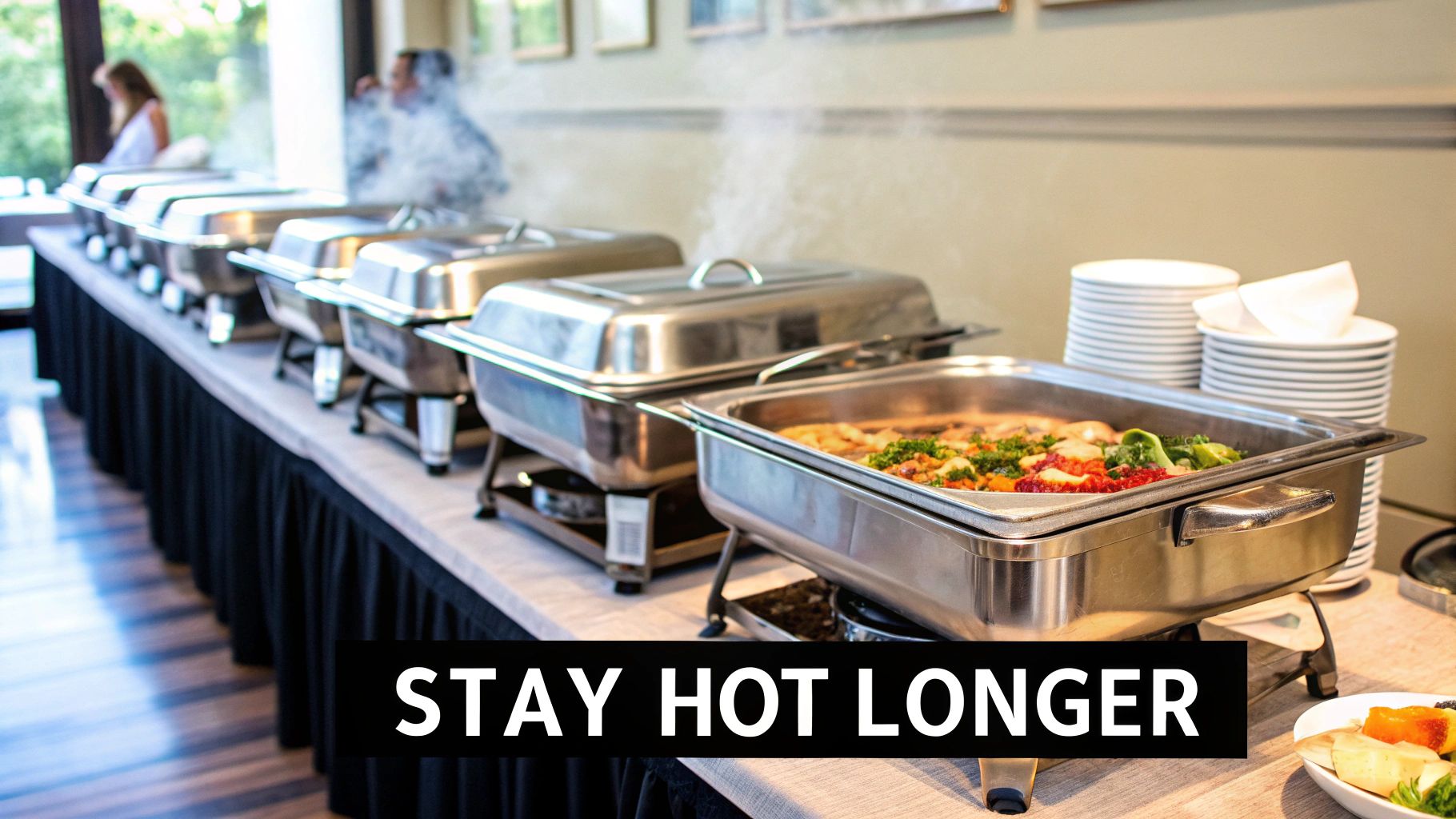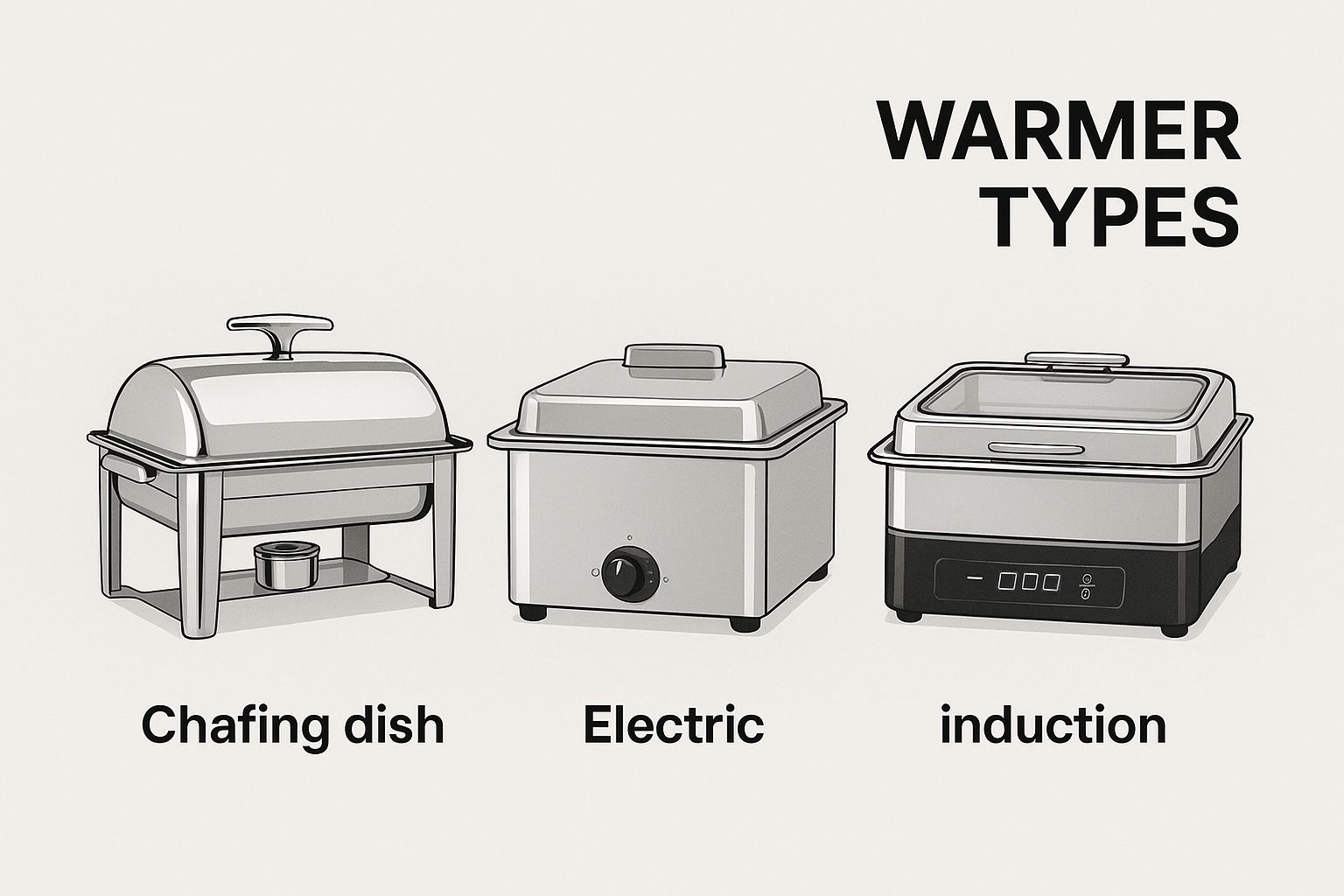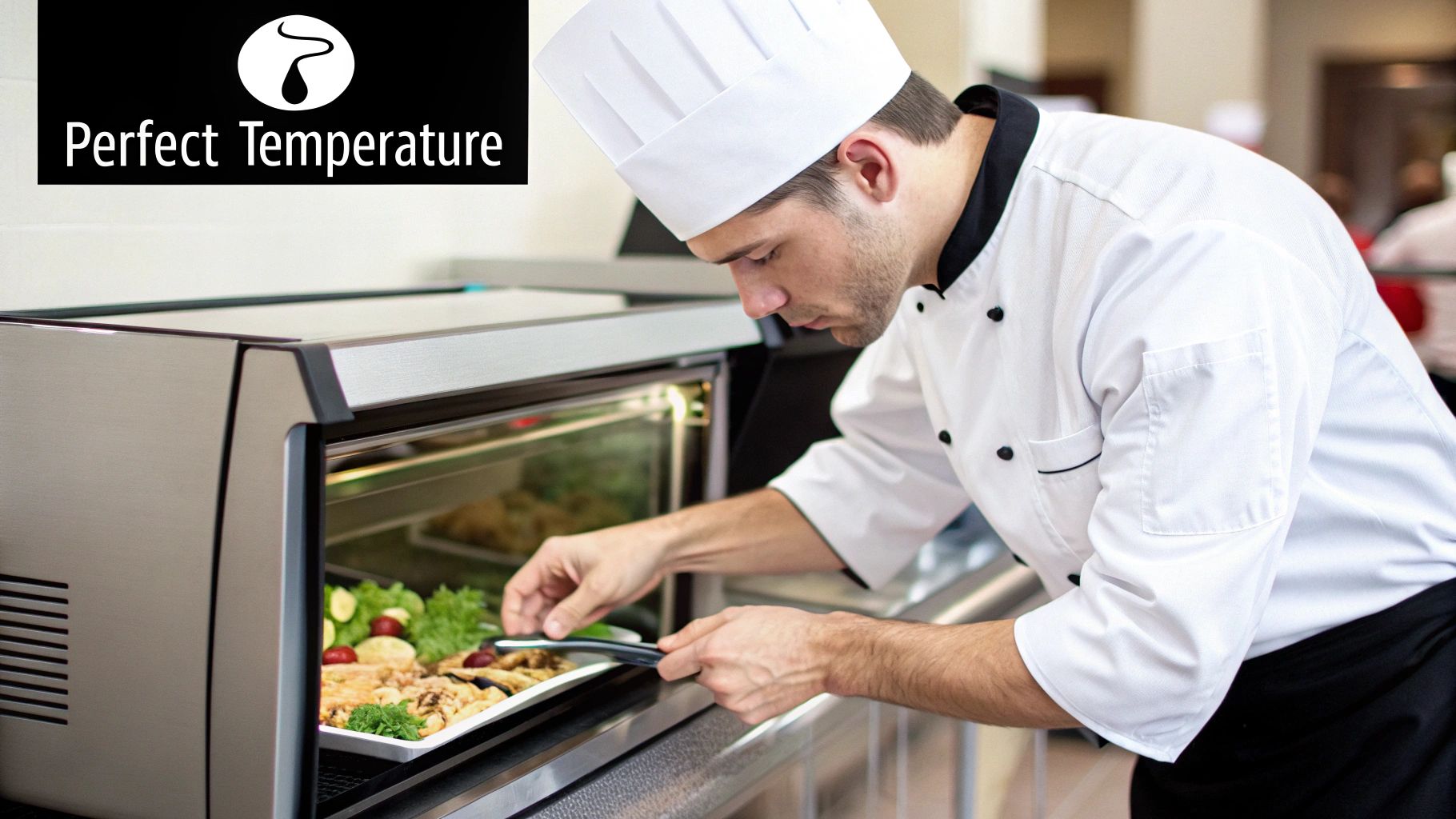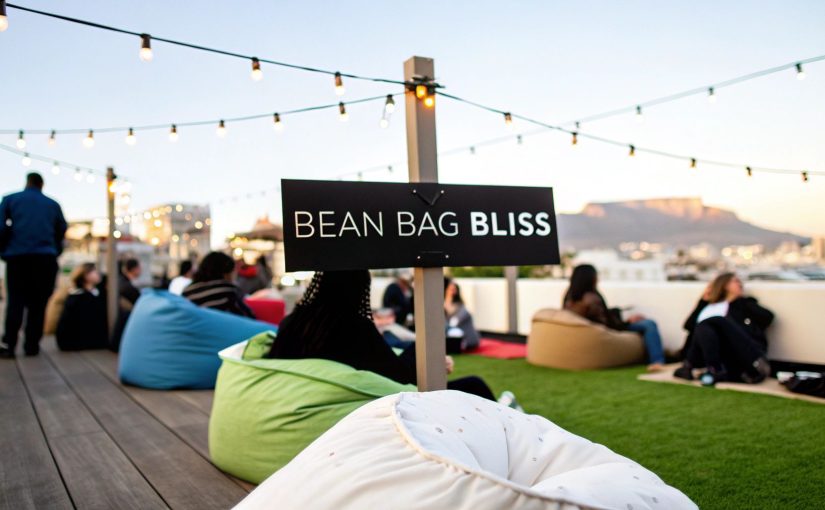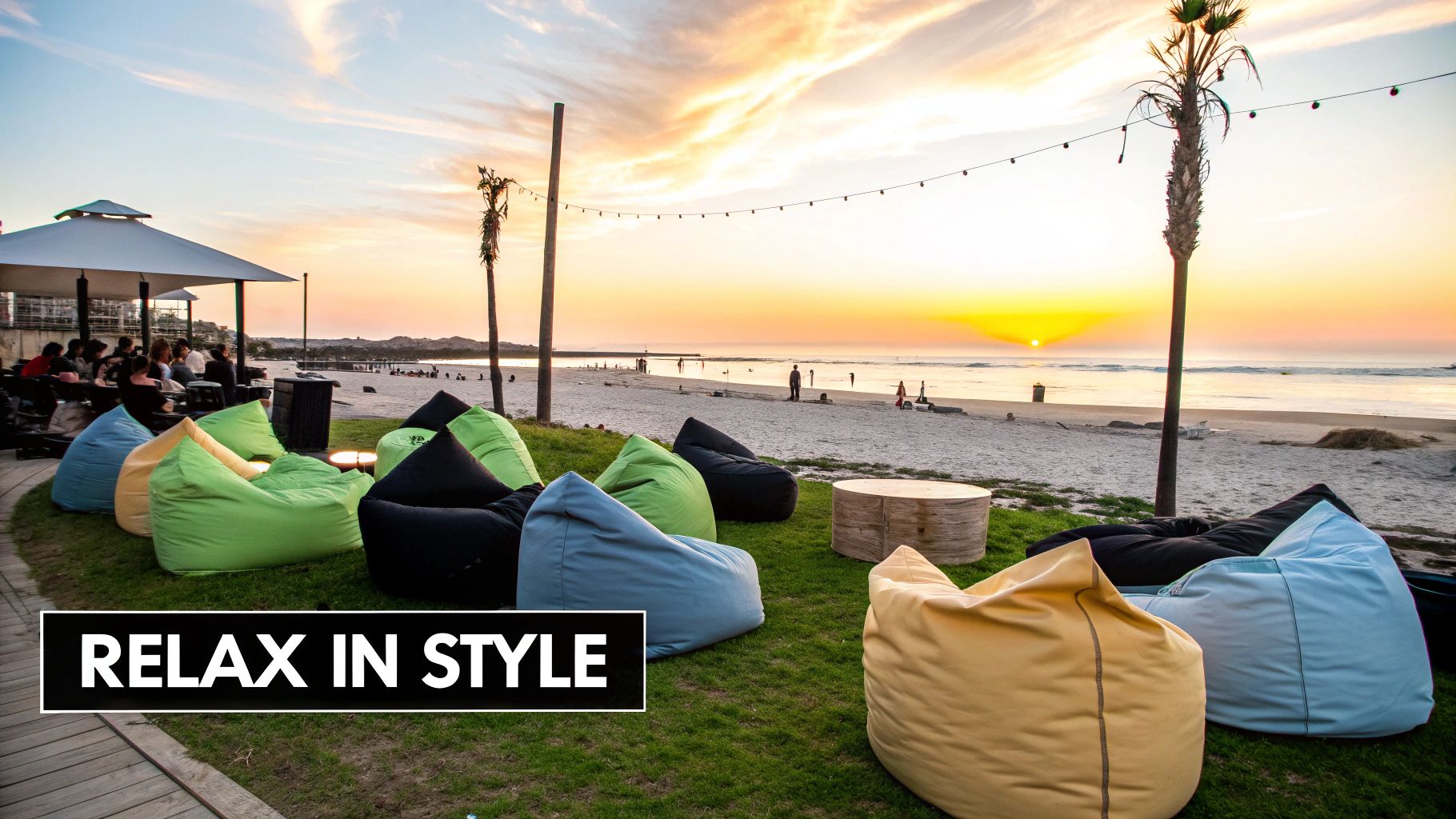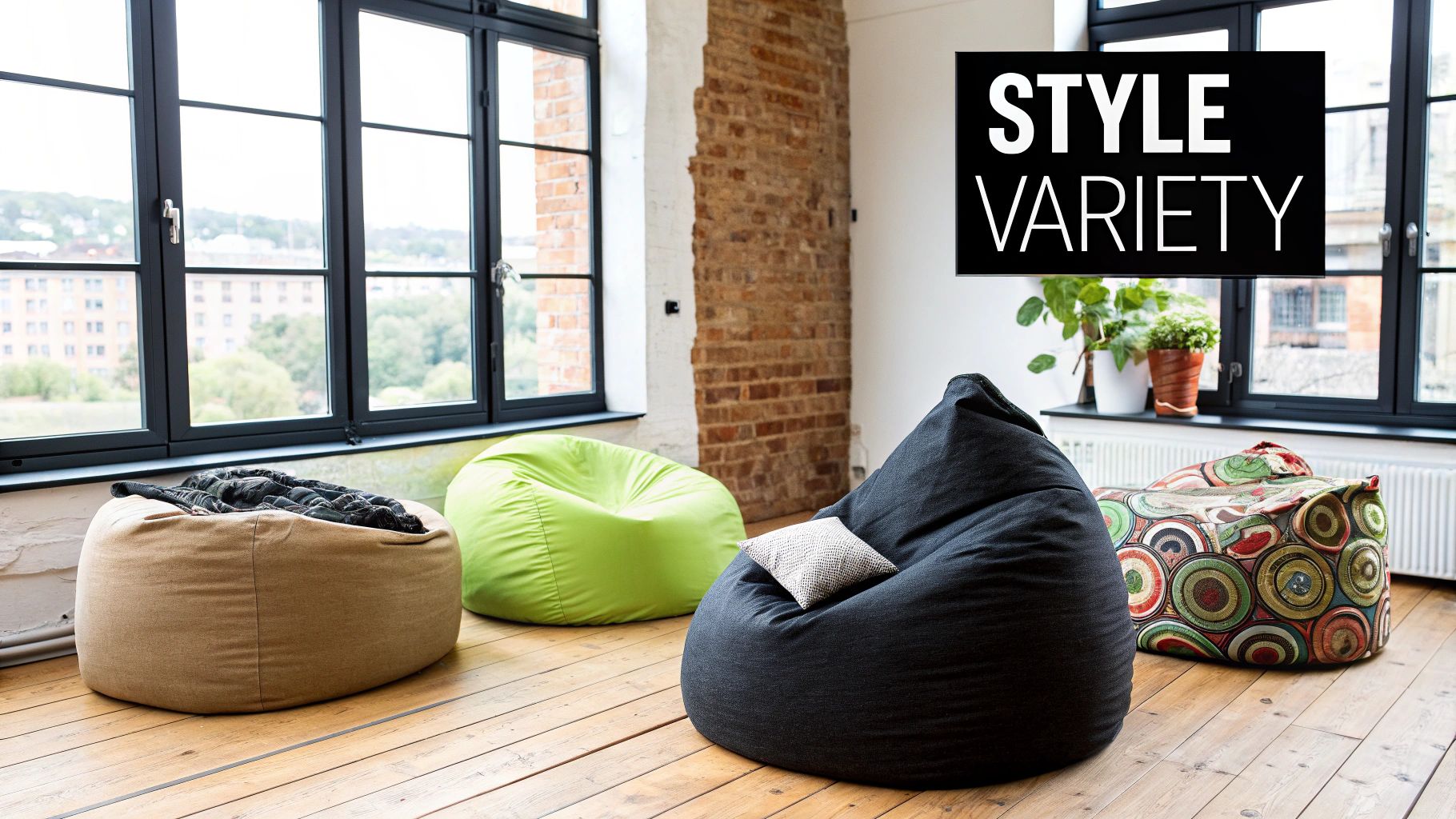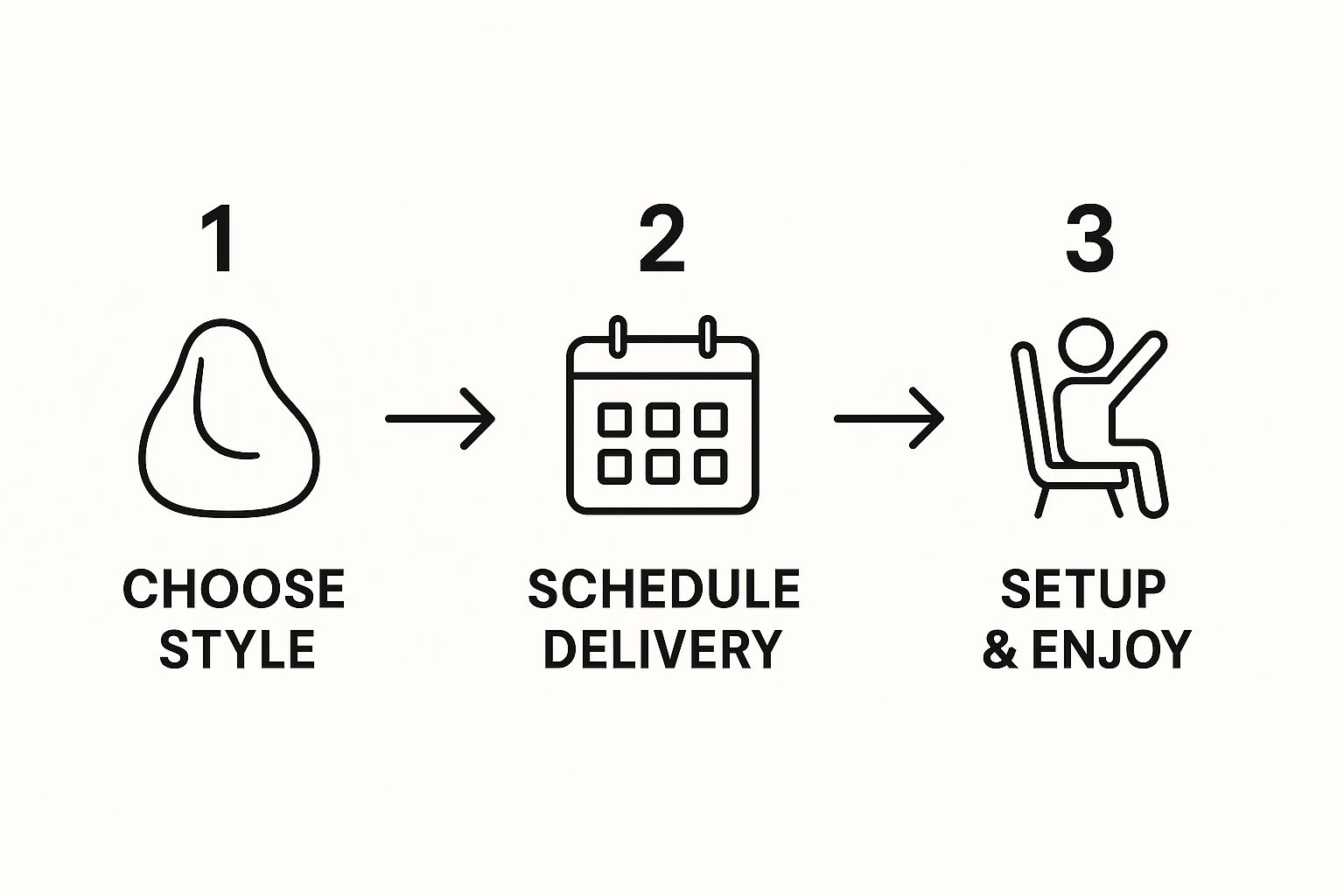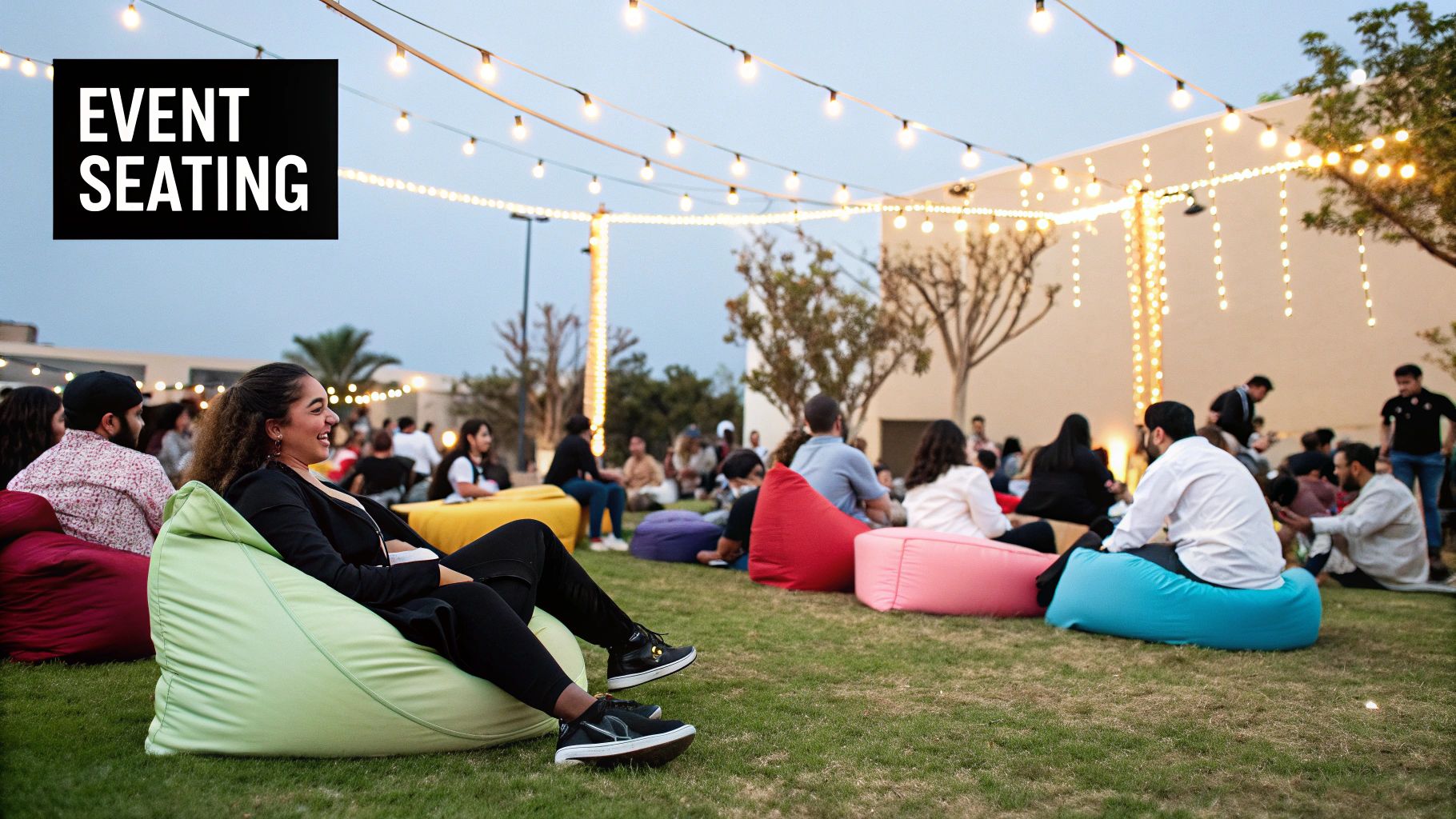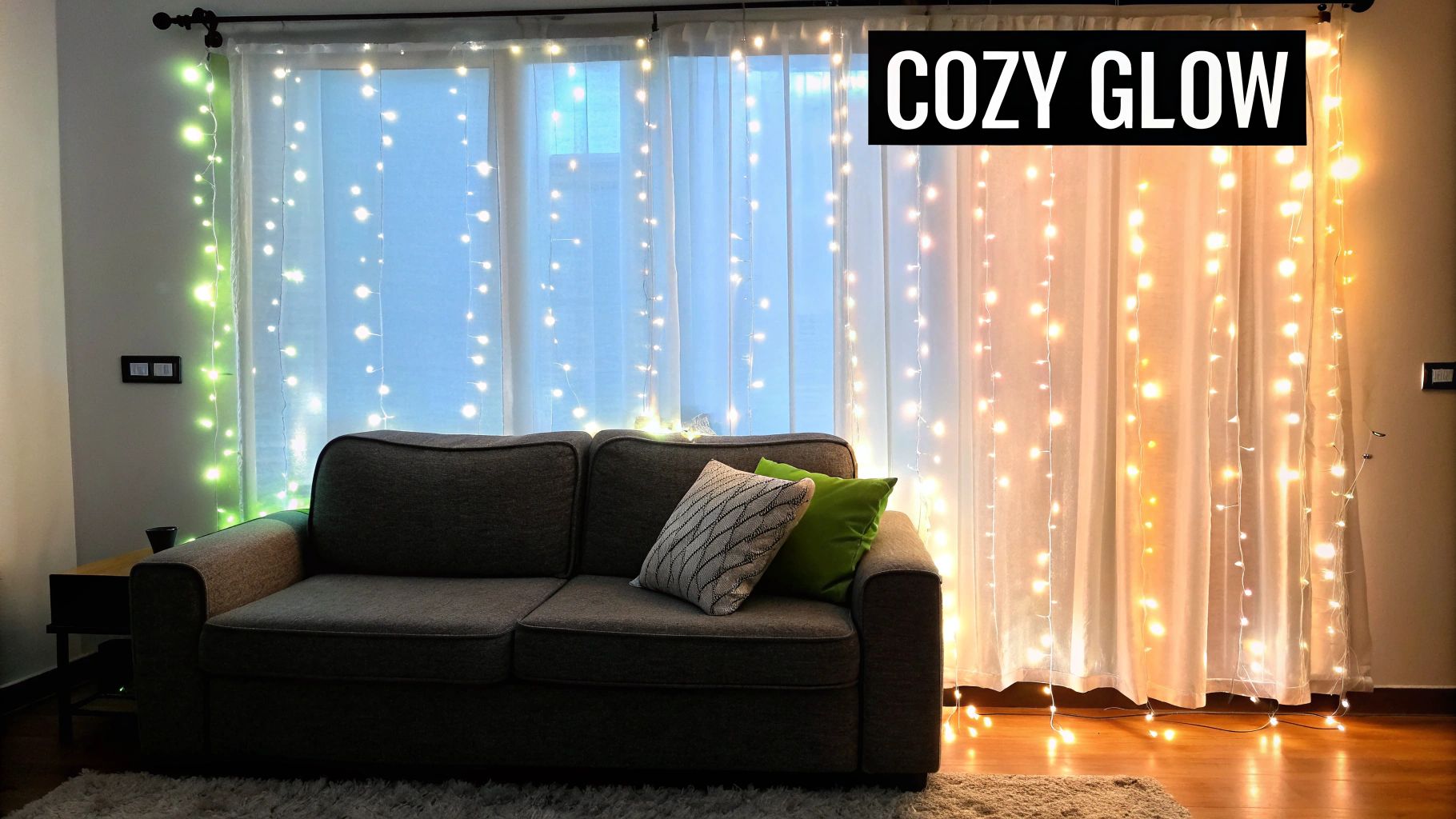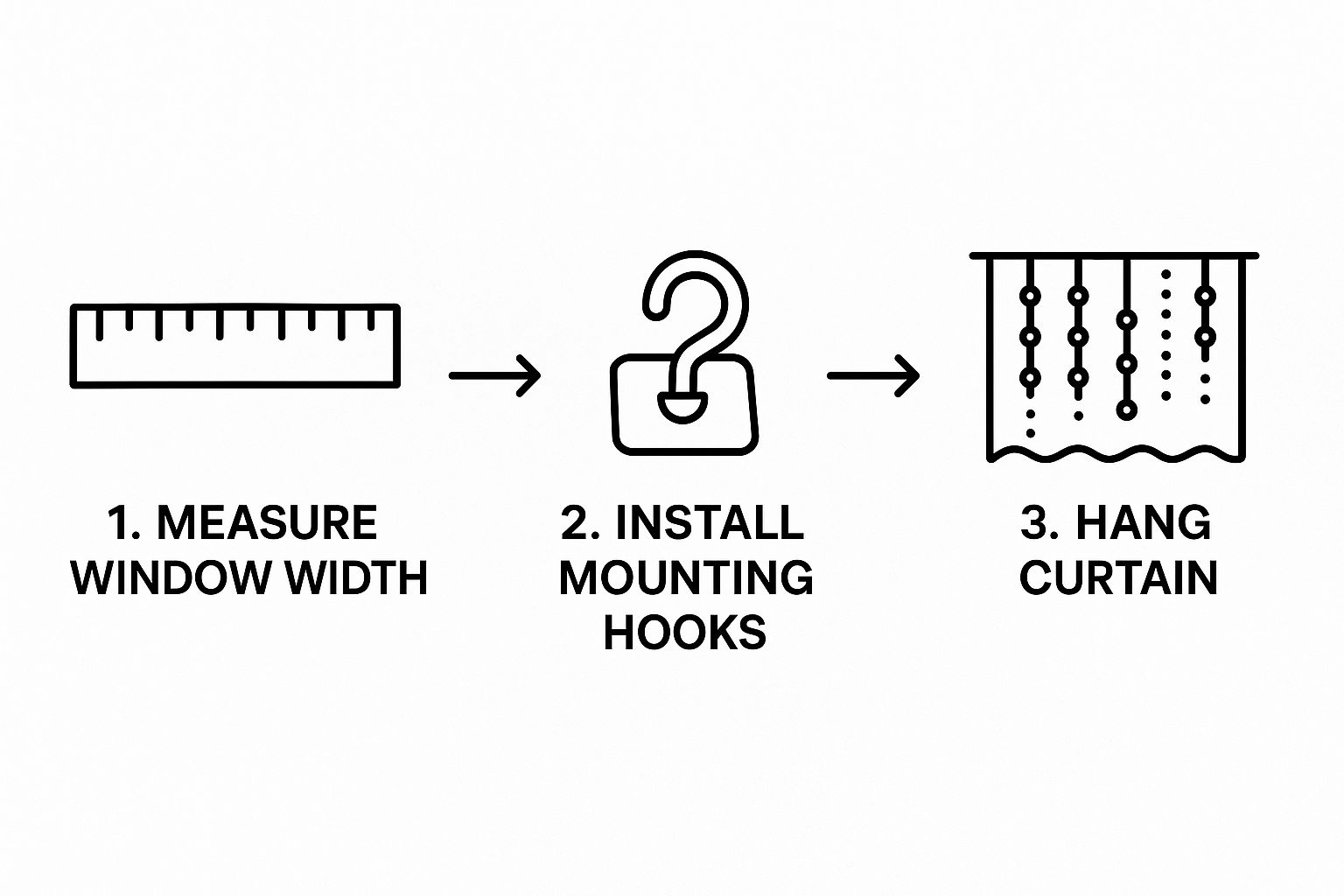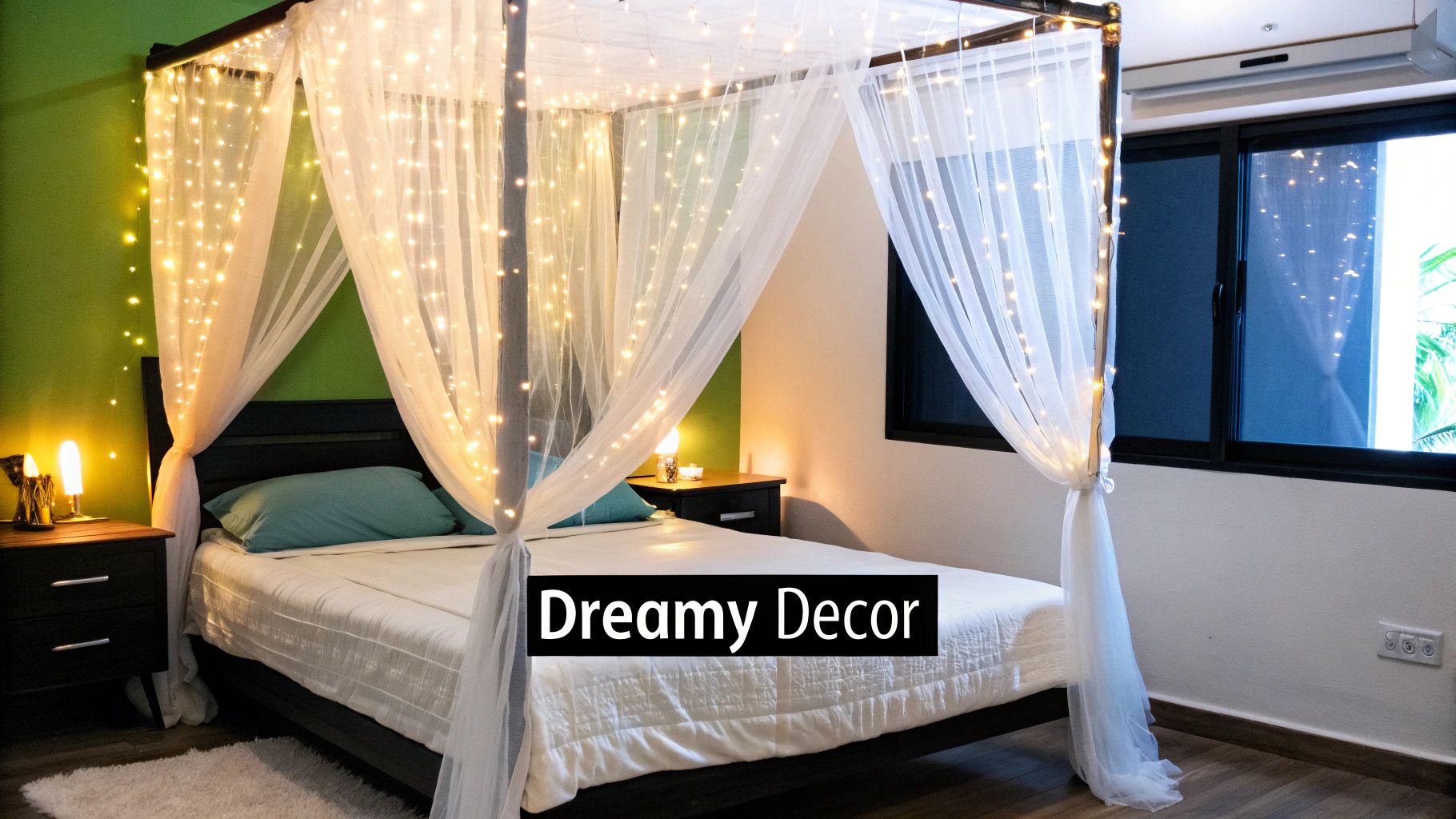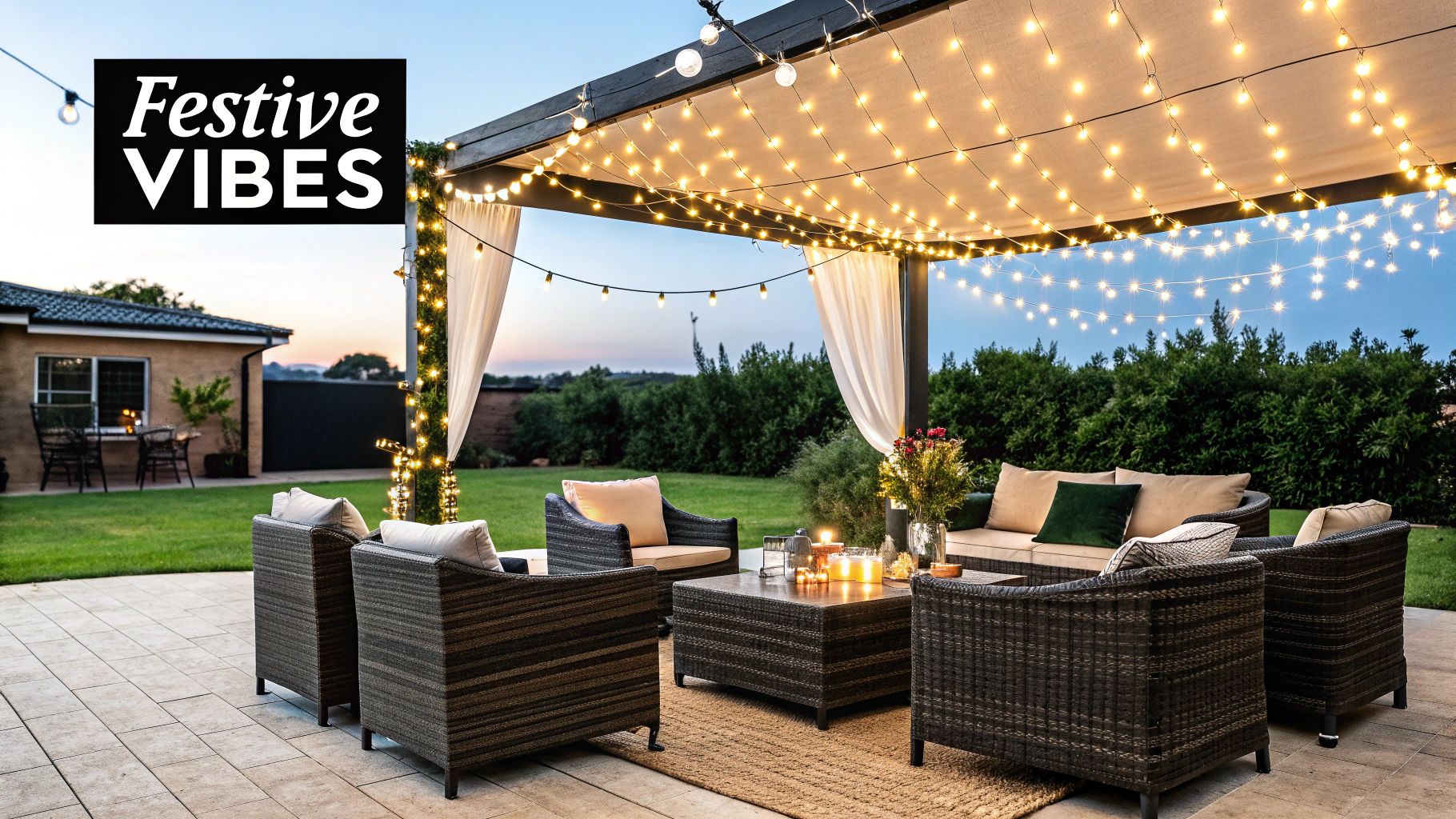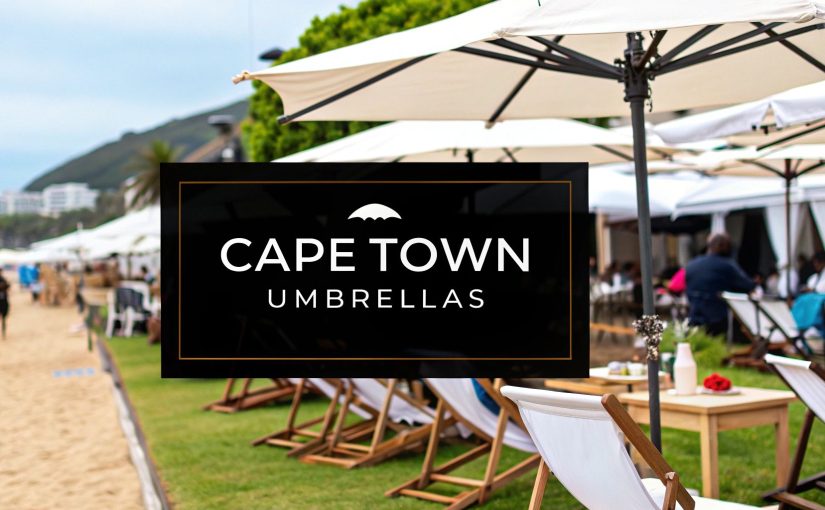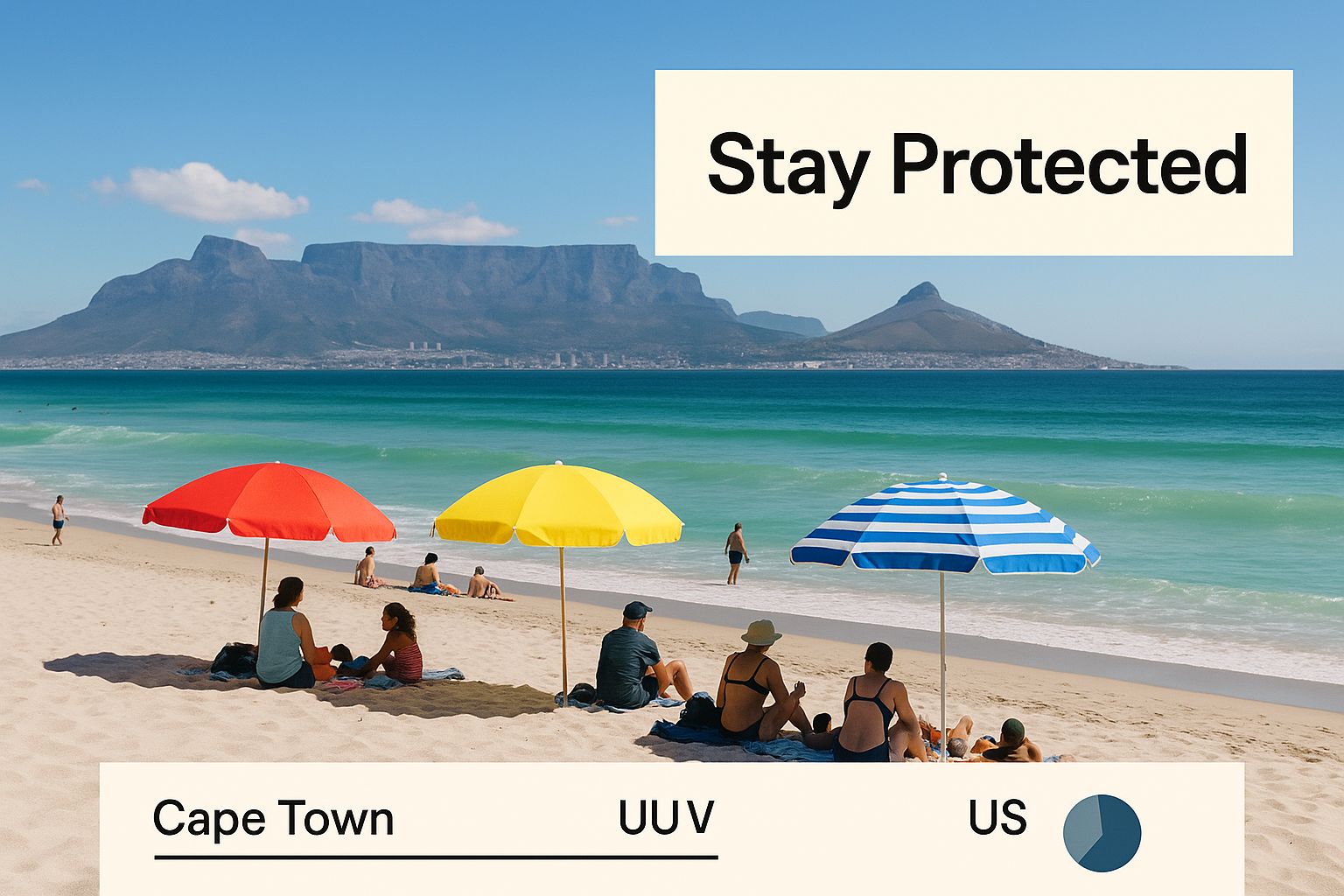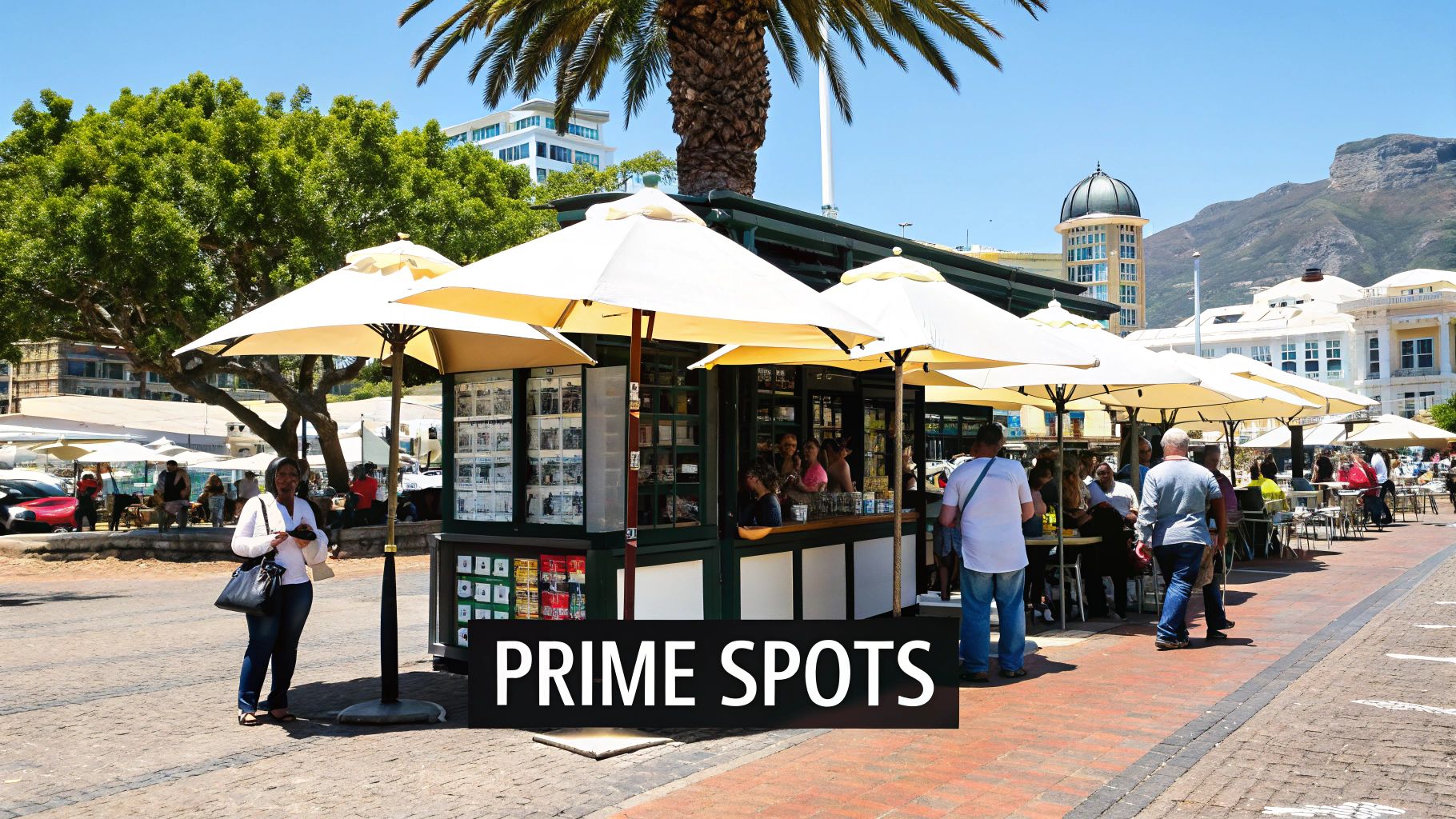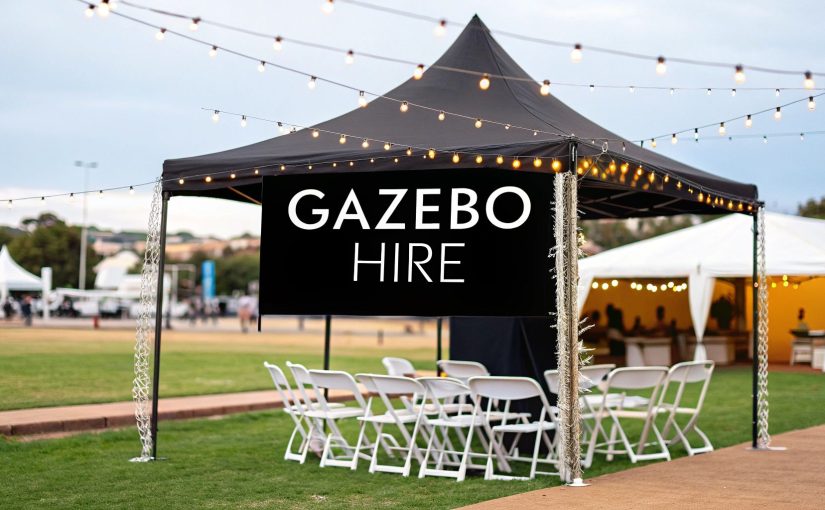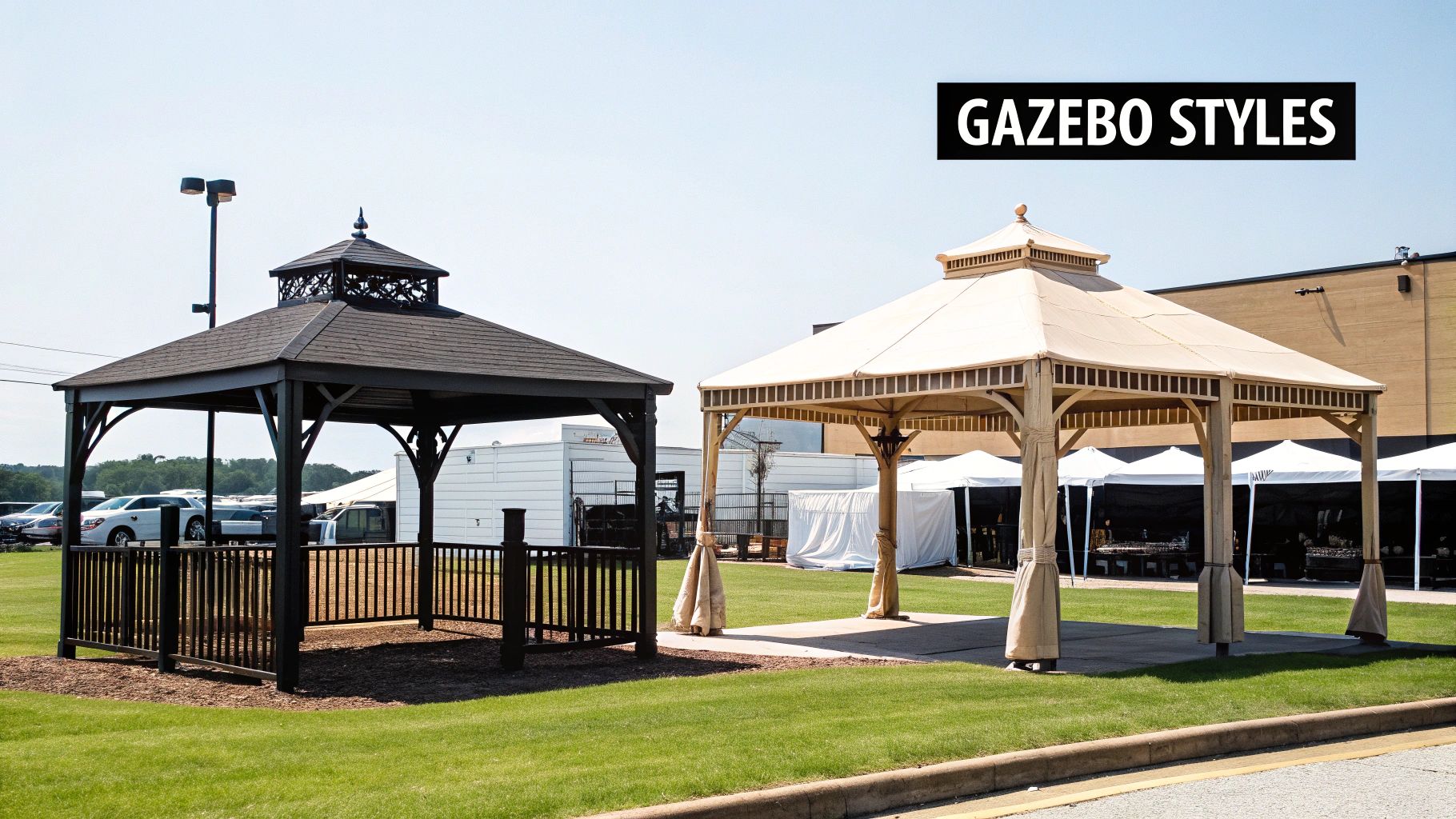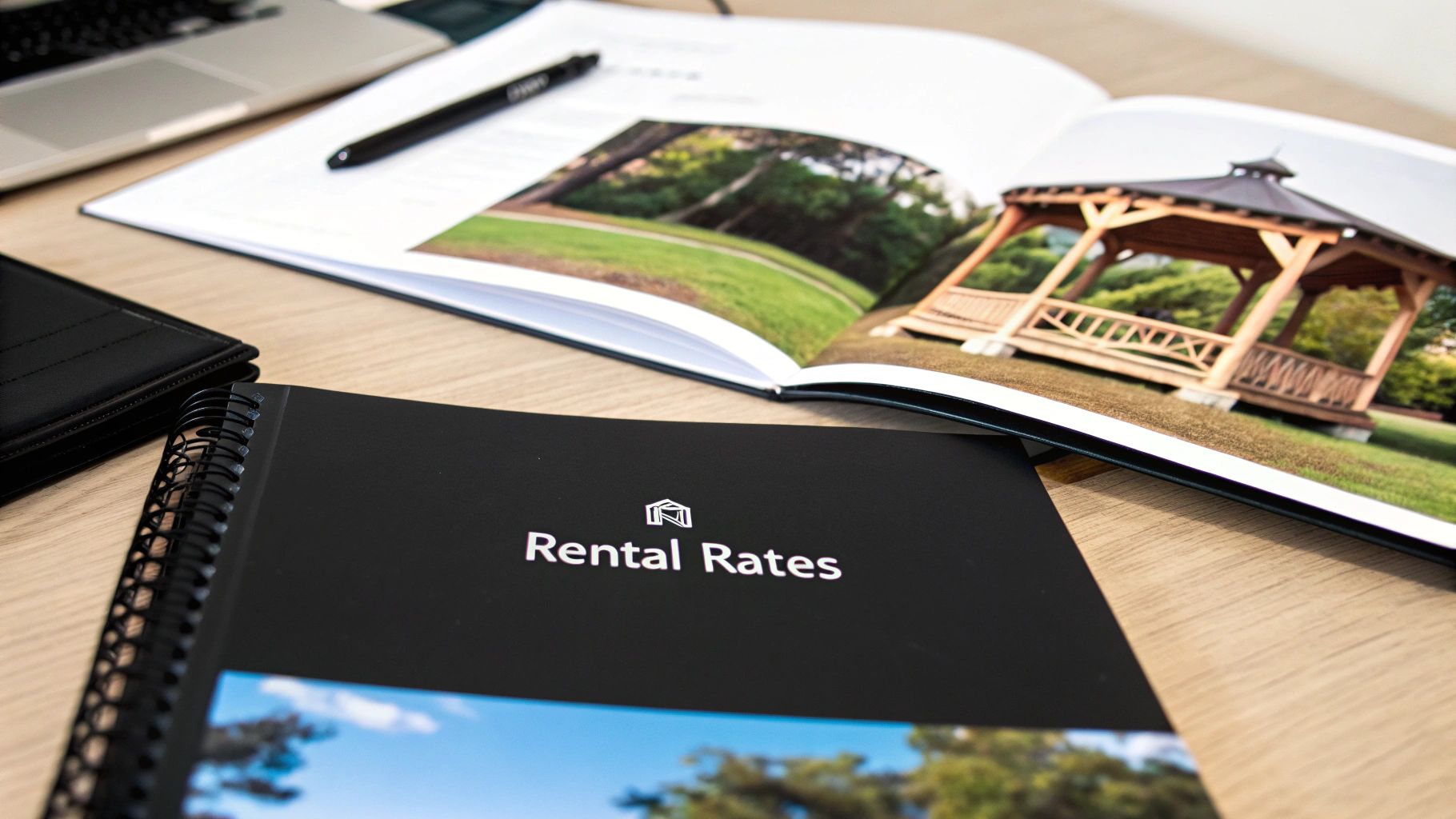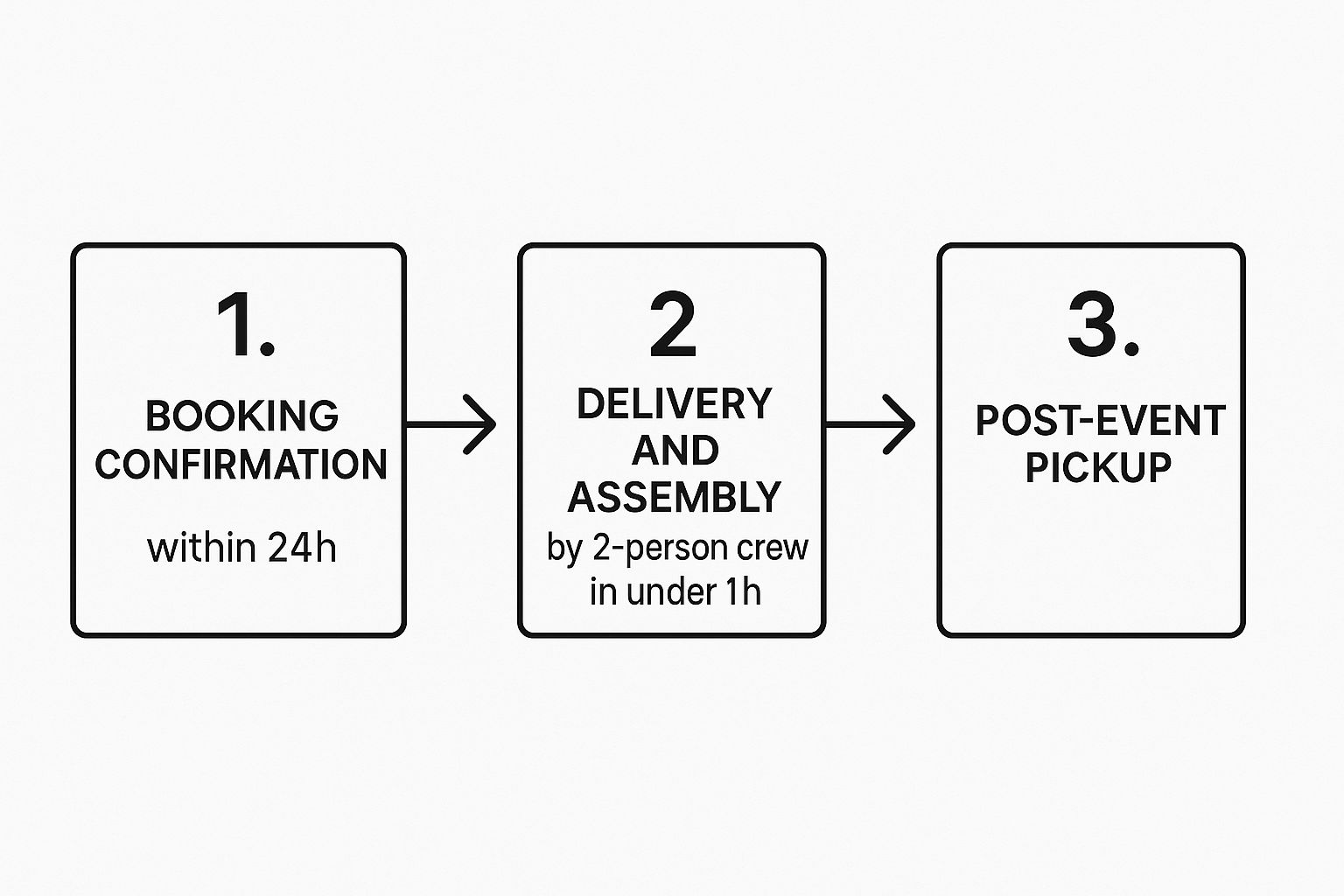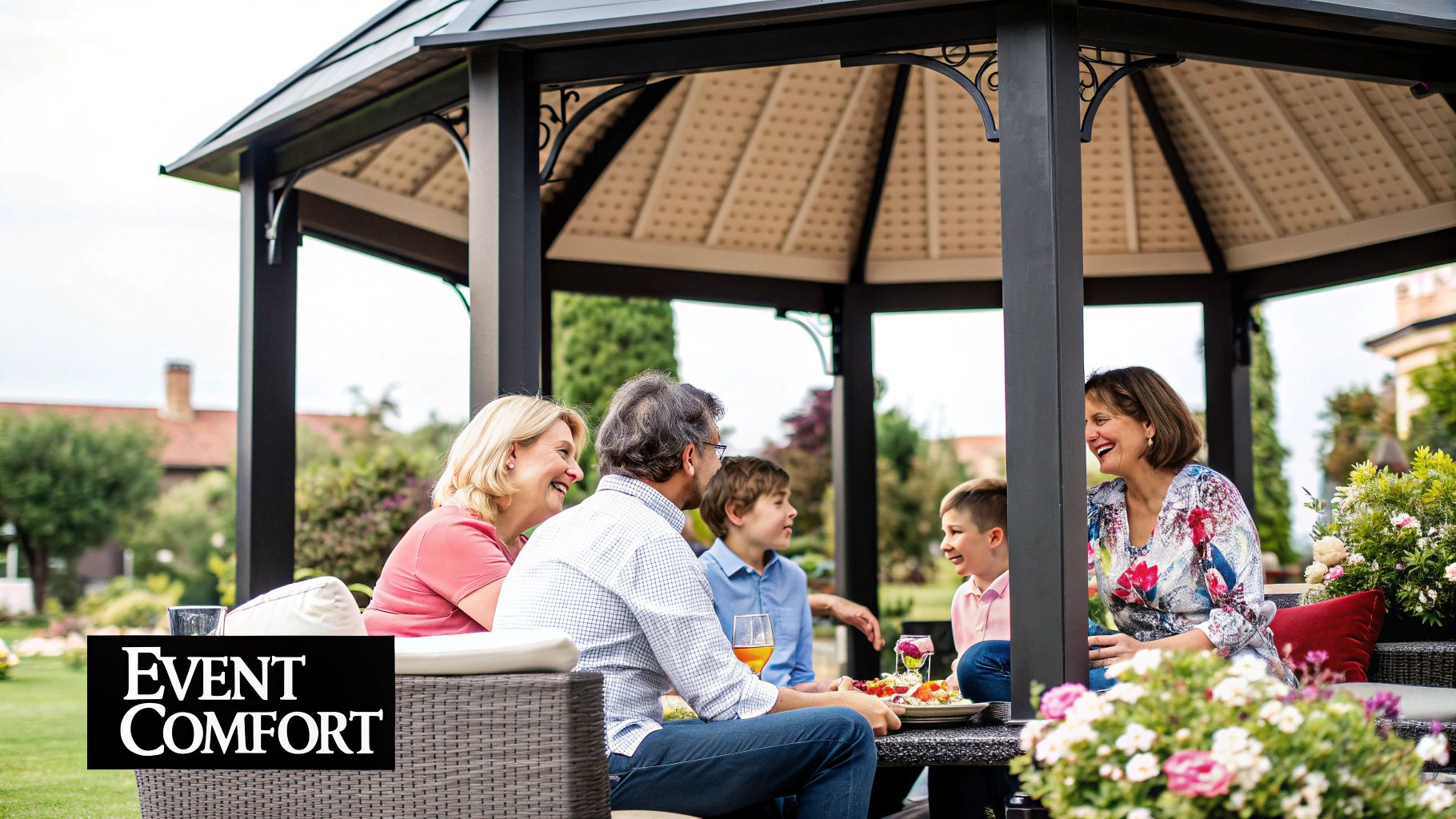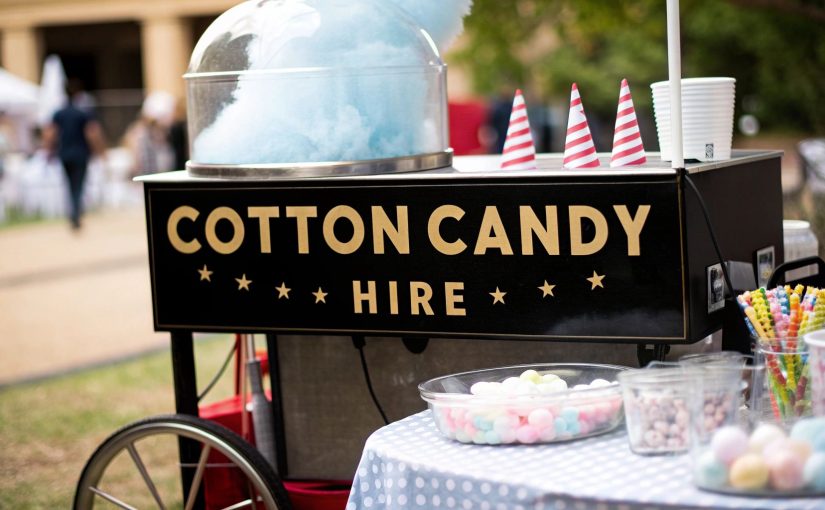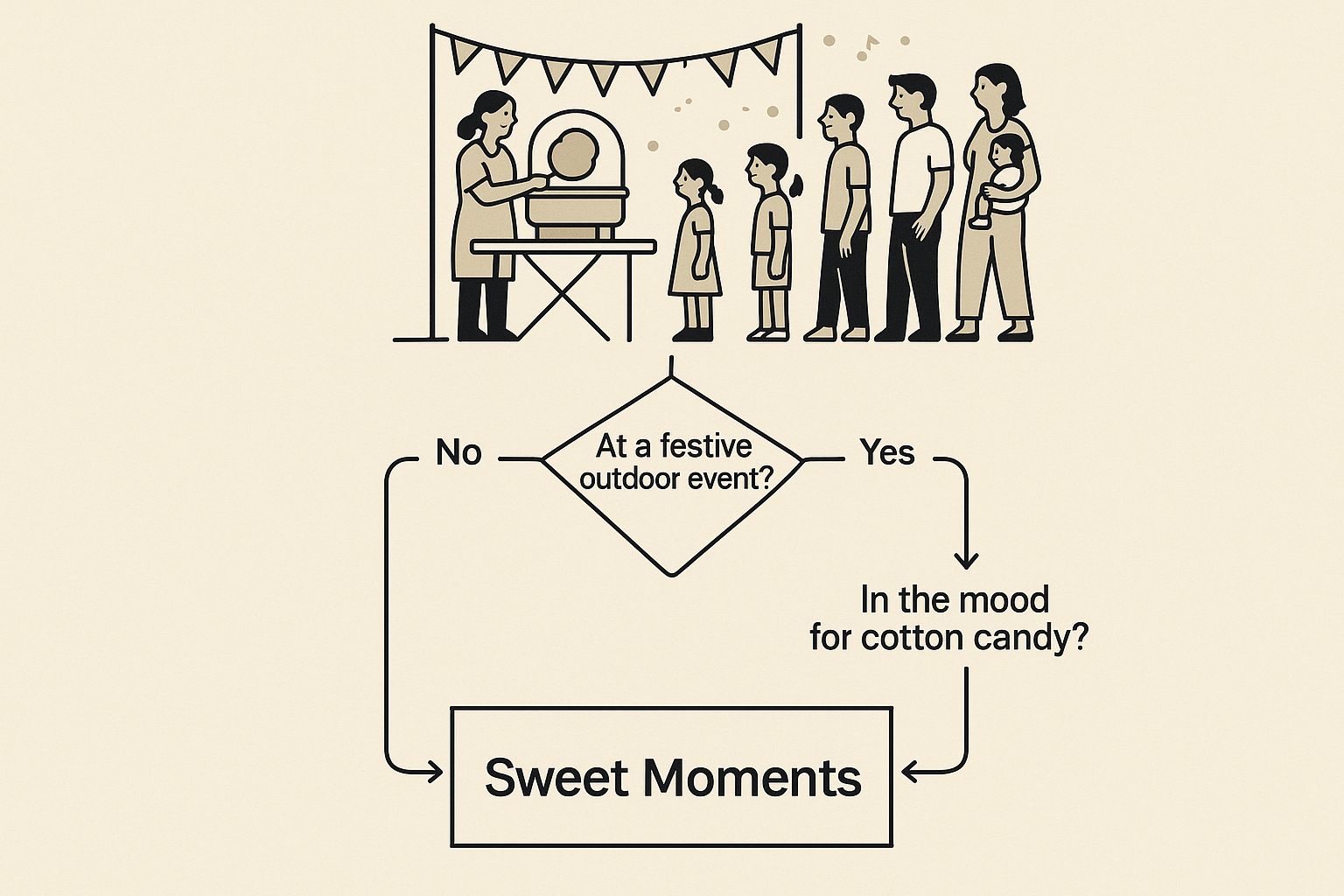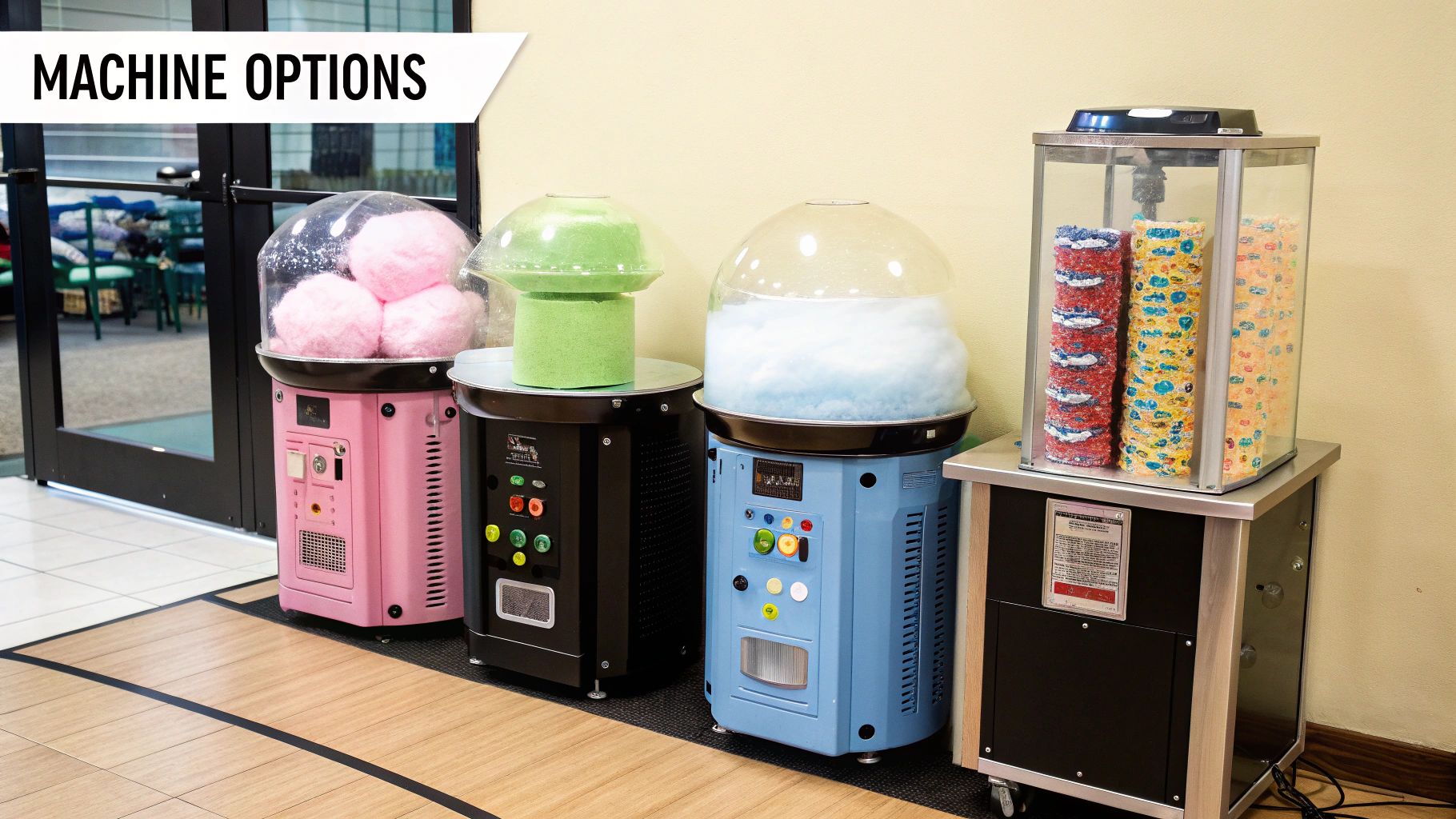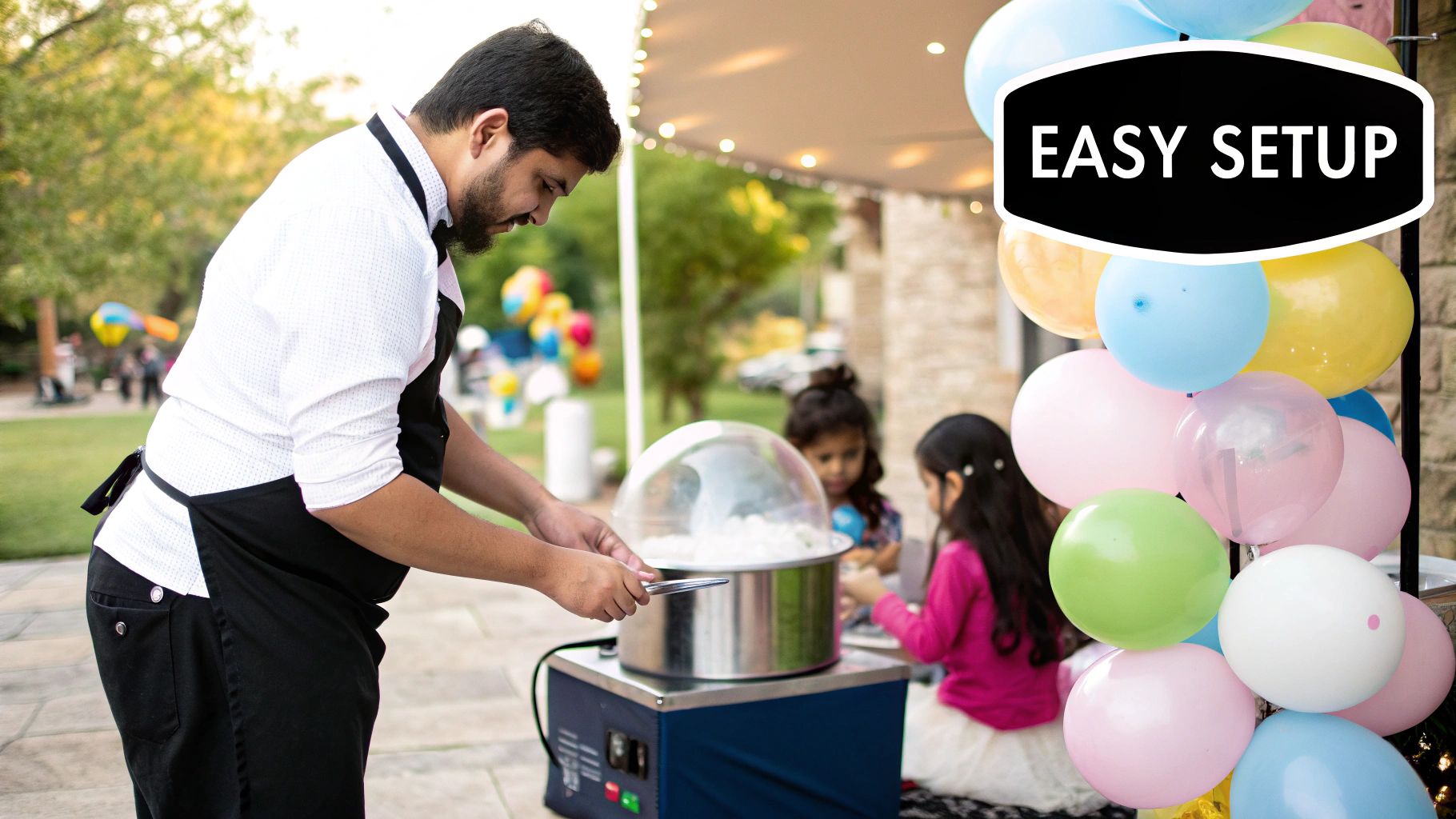Picking the right bar tables and chairs for your event in Cape Town is about so much more than just giving people a place to sit. It’s about creating an atmosphere. Think of them as your secret weapon for shaping how your guests interact, defining the layout of your space, and setting the perfect tone from the get-go.
Why Bar Furniture is the Foundation of Great Event Design
Imagine your event space as a blank canvas. Sure, things like lighting and décor add the colour and flair, but it’s the bar tables and chairs that create the fundamental structure. They subtly guide how people move, where they decide to gather, and how comfortably they can socialise. Nailing this foundation is always the first step to pulling off a seamless and memorable day.
It all comes down to context. A high-powered corporate networking event at the Cape Town International Convention Centre calls for a totally different setup than, say, a laid-back beach wedding in Camps Bay. The first might need sleek, minimalist poseur tables to encourage people to stand and mingle, while the wedding could use rustic wooden high-tops to create cosy little seating pods for guests to chat.
Matching Furniture to Your Event’s Goal
The real aim is to make sure your furniture choices support what you’re trying to achieve with your event. It’s worth thinking about a few key functions:
- Getting People Talking: High-top tables are natural social hubs. They give guests a casual spot to rest their drinks and strike up a conversation, without the formal feel of a traditional dining table.
- Making the Most of Your Space: Bar-height furniture generally has a smaller footprint. This is a game-changer in popular but often tight Cape Town venues, letting you fit more guests in comfortably.
- Setting the Vibe: The material, colour, and style of your furniture are instant communicators. Sleek metal gives off a modern, industrial vibe, while warm wood makes a space feel rustic and welcoming straight away.
The right furniture doesn’t just fill a room; it directs the energy within it. It acts as an unspoken host, guiding guests to connect, relax, and enjoy the experience you’ve carefully planned.
The growing demand for quality event rentals isn’t just a hunch; it’s a clear trend in the local market. This just goes to show how crucial well-designed, functional furniture has become for creating amazing event experiences. You can read more about the South African furniture market trends on Fortune Business Insights.
At the end of the day, your choices should make your guests comfortable and help the event flow naturally from start to finish.
Exploring Different Types of Bar Tables and Stools
When you’re planning an event, it’s easy to lump all bar tables and chairs into one category. But that’s like saying all shoes are the same. In reality, just like you wouldn’t wear hiking boots to a wedding, different bar furniture setups serve very different purposes. Getting this right is the secret to creating social spaces that feel just right for your guests here in Cape Town.
Your options really come down to a few key styles. You’ve got your classic bar tables, the more compact poseur tables, and larger high-top tables. Each one brings something unique to the table (pun intended!), shaping the atmosphere and how your guests interact.
Here’s a quick look at some of the most popular styles you’ll find available for hire.
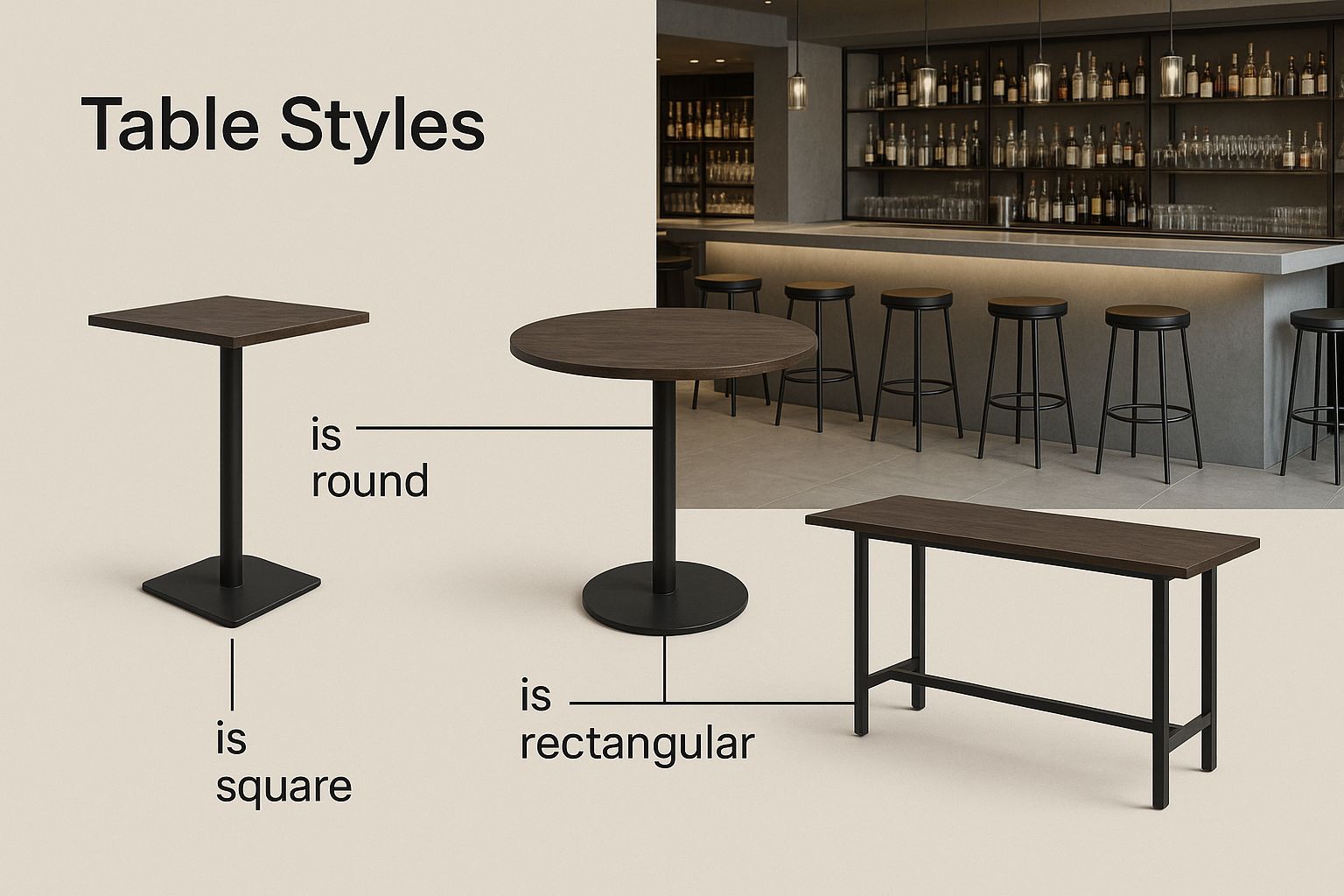
As you can see, the visual differences are clear—from sleek, modern lines to more rustic, traditional looks. Each design helps define the feel of a space before a single guest arrives.
Tables That Shape Guest Interaction
Think of a poseur table as a social hub, a “watering hole” for your event. These are your taller, smaller tables (usually around 106cm to 110cm high) designed for standing around. They’re absolutely perfect for networking events or cocktail hours because they encourage people to move, mingle, and drift between conversations.
A high-top table, on the other hand, is more like a “mini-lounge.” It’s still bar-height, but it’s larger and built to comfortably seat two to four people. This is how you create those intimate little pockets where small groups can settle in for a proper chat without needing a full dining table.
This kind of functional variety is the bread and butter of the furniture hire world. The South African furniture market has found its footing at around USD 2.3 billion in recent years, and a huge chunk of that comes from the hospitality industry. Event planners rely on versatile pieces like these to build adaptable, welcoming spaces. You can dig deeper into these furniture market insights from Future Market Insights if you’re curious.
Choosing the Right Seating
The chairs you choose are just as crucial as the tables. They dictate comfort and control the flow of your event. The main decision you’ll face is whether to go for stools with or without back support.
Your choice of seating sends a clear signal to your guests. Backless stools say, “Stay for a quick chat,” while high-back chairs invite them to “Settle in and get comfortable.”
Let’s look at the two most popular options:
- Backless Bar Stools: Sleek and space-efficient, these are your go-to for short-term use. They tuck neatly under tables, making them ideal for high-traffic areas where you want to keep the energy up and encourage a more dynamic, standing-room feel.
- High-Back Bar Chairs: When you expect guests to be seated for a while, comfort is everything. High-back chairs provide that essential support, making them a much better choice for casual dining setups, VIP lounges, or any part of your event where people will be settled for longer.
Bar Table and Chair Pairing Guide
To make things even clearer, here’s a quick guide to help you match the right tables with the right chairs for any kind of event you might be planning.
| Table Type | Ideal Chair Style | Best For (Event Type) |
|---|---|---|
| Poseur Table | Backless Bar Stools | Cocktail hours, networking events, trade shows, and high-traffic areas. |
| High-Top Table | High-Back Bar Chairs | Casual dining, VIP lounges, breakout sessions, and intimate social zones. |
| LED Cocktail Table | Sleek, Modern Stools | Night-time parties, product launches, weddings, and modern-themed events. |
| Rustic Wooden High Table | Industrial or Tolix Stools | Rustic weddings, outdoor gatherings, wine farm events, and barn parties. |
Ultimately, the goal is to create a seamless experience. The right pairing doesn’t just look good—it makes your guests feel comfortable and encourages them to connect in the exact way you intended.
Matching Materials and Finishes to Your Theme
Think of the materials you choose for your bar tables and chairs as the key ingredients in a recipe—they completely define the final flavour of your event. Wood can whisper rustic charm, metal gives off a cool industrial edge, and sleek acrylics create a clean, modern feel. Getting it right is about more than just aesthetics; it’s about telling a consistent story that your guests can see and touch from the moment they walk in.
The material really does set the tone. A beautiful reclaimed wood bar table at a Stellenbosch wine farm wedding, for example, just feels right. It ties the furniture into the earthy, authentic atmosphere of the vineyards. In the same way, polished chrome or black metal bar tables and chairs would be the perfect fit for a slick tech launch at the V&A Waterfront, reflecting a modern and forward-thinking brand.
Wood for Warmth and Rustic Appeal
There’s a reason wood is such a classic choice. It brings an organic, welcoming warmth that’s incredibly versatile. From deep mahogany for a sophisticated indoor event to light, weathered pine for a relaxed beachside gathering, wood can be styled to suit almost any theme you can imagine.
It’s an excellent go-to for events aiming for a comfortable and inviting atmosphere. Here in Cape Town, you’ll find great rental options like these:
- Reclaimed Wood: Perfect for rustic, bohemian, or eco-conscious themes. It brings a real sense of history and character to the space.
- Dark-Stained Hardwoods: Ideal when you want to create a more formal or luxurious feel, perhaps for a gala dinner or a corporate awards evening.
- Light-Coloured Pine or Oak: A brilliant choice for casual, daytime events or those with a laid-back Scandinavian or coastal vibe.
Metal for Modern and Industrial Styles
If your event calls for a sharper, more contemporary look, metal is your best friend. It’s durable, sleek, and makes a strong visual statement. Metal furniture often has a lighter frame and a smaller profile, making it a seriously practical option for maximising space in tighter venues.
Choosing a material is a sensory decision. The cool, smooth feel of metal or the textured grain of wood communicates your event’s personality before a single word is spoken.
The finish on the metal can completely alter the mood. Brushed aluminium, for instance, offers a soft, modern feel, while powder-coated black steel gives you that bold, industrial look that pairs so well with exposed brick or concrete venues. For a bit of glam, polished chrome or gold finishes add an instant touch of luxury, perfect for celebratory parties or high-end product launches.
Acrylics and Plastics for a Minimalist Touch
For a truly clean and almost futuristic aesthetic, you can’t go wrong with acrylic or high-quality plastic furniture. These pieces often come in transparent or bold, solid colours, creating a wonderful sense of lightness and space. Those clear ‘ghost’ chairs and tables are fantastic for small venues because they don’t visually clutter the room.
This style is a perfect match for modern art gallery openings, minimalist weddings, or any event where you want the decor, lighting, or the venue’s architecture to be the main attraction. The clean lines of these bar tables and chairs ensure they complement your theme without ever overpowering it.
How to Perfect Your Event Layout and Spacing
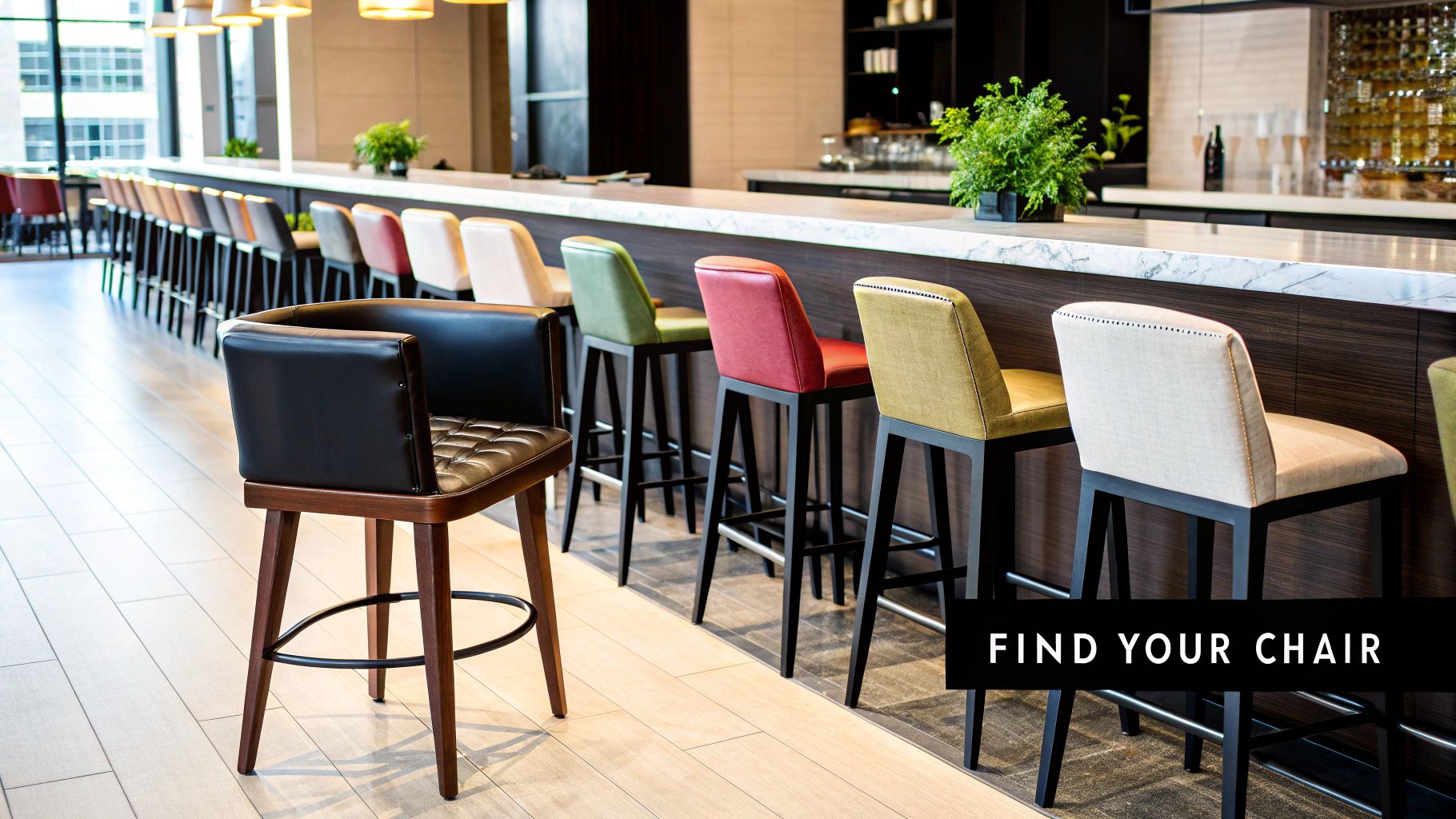
Getting the layout of your bar tables and chairs right is a bit like directing traffic at a busy intersection. When it’s done well, everything just flows. People move, mingle, and find their space without a second thought. But get it wrong, and you create jams and awkward dead zones.
The secret is to stop thinking about furniture and start thinking about pathways. A classic rookie error is to underestimate just how much room people actually need. A cramped layout can really kill the vibe, making your guests feel trapped rather than free to enjoy themselves.
Mastering Key Measurements
While every event space is different, there are a few golden rules that will keep you on the right track. For a start, the sweet spot for comfort is a height difference of about 25-30 cm between the bar stool seat and the tabletop. This gives everyone enough legroom without making them feel like they’re reaching for their drinks.
But the real game-changer is the space around the furniture.
- Main Walkways: These are the high-traffic arteries of your event space. Keep them clear and wide – at least 1.2 to 1.5 metres. This is enough for two people to pass comfortably and for catering staff to get through without any hassle.
- Between Tables: When you’re setting up clusters of bar tables and chairs, give them some breathing room. A minimum of 90 cm between each table is essential so guests can pull out their stools without bumping into the person behind them.
- Social Zones: Don’t just dot individual tables around. Group three or four poseur tables together to create a natural hub for mingling. It’s amazing how this simple trick encourages people to connect.
A great layout doesn’t just accommodate guests; it anticipates their needs. It gives them the freedom to move, connect, and enjoy the atmosphere without ever feeling restricted by the furniture.
Planning for the Cape Town Climate
Here in Cape Town, we live for our beautiful outdoor venues. But that means you have to plan for the elements. Whether it’s a blazing sun or a gusty southeaster, your furniture placement needs to be smart.
You might need to factor in extra space for shade solutions, which can impact your entire layout. For some practical tips on keeping everyone comfortable, have a look at our guide on Cape Town umbrella hire.
At the end of the day, a successful layout should feel completely effortless. It guides people naturally, creating a seamless flow that gets conversations started and makes sure every corner of your venue is put to good use.
Styling Your Furniture to Create Atmosphere
You’ve sorted the materials and perfected the layout. Now for the fun part: turning your functional bar tables and chairs into elements that genuinely shape the feel of your event. This is where you get to inject your personality and make the space your own.
With just a few creative touches, you can lift your furniture from being simple hired items to being a core part of your event’s atmosphere. It’s the difference between a room that just has furniture in it, and a space that feels intentional, immersive, and truly memorable for your guests.
From Blank Canvas to Centrepiece
Think of your bar tables as miniature canvases, just waiting for a splash of personality. One of the easiest and most effective ways to do this is with linens. A crisp white linen gives you that classic, clean look, but a bold, colourful runner can instantly bring in your theme or brand colours.
For a bit of local Western Cape charm, why not bring some of our incredible local flora into your centrepieces?
- Subtle Fynbos Arrangements: A few small, low-profile arrangements of fynbos like proteas or ericas add an authentic local touch without getting in the way or blocking sightlines.
- Minimalist Greenery: Sometimes less is more. A simple runner of eucalyptus leaves down the centre of a long cocktail table creates a fresh, organic feel that’s perfect for outdoor or rustic-themed events.
- Candles and Lanterns: For any event running into the evening, the warm, intimate glow from a few candles or small lanterns is unbeatable. It just encourages people to slow down and connect.
The key is to enhance the table, not clutter it. The best centrepieces add beauty and interest while leaving plenty of space for guests to put down their drinks and actually socialise.
Styling is the final layer that connects every element of your event. It’s how you transform a collection of hired items into a cohesive, atmospheric experience that feels uniquely yours.
The Power of Strategic Lighting
Never, ever underestimate the power of lighting. It’s probably the most powerful tool you have for shifting the mood of a space. The right lighting can turn your bar tables and chairs into inviting focal points, drawing guests into social hubs and creating a dynamic vibe as your event moves from day to night.
For a truly magical evening effect, you can’t go wrong with the soft glow of fairy lights. They’re so versatile – wrap them around table legs, drape them overhead, or create a shimmering backdrop. If you want some more ideas for creating that wow-factor, our guide on using a fairy light curtain has some brilliant tips.
By combining creative centrepieces with the right linens and strategic lighting, you ensure your furniture doesn’t just fill the space—it absolutely brings it to life.
Getting Your Furniture Hire Sorted in Cape Town
Hiring furniture for your event should be the easy part, not a source of stress. The secret is having a solid plan for the logistics, right from your first phone call to the final collection after the party’s over. This ensures you get top-quality bar tables and chairs delivered on time, without any nasty surprises here in Cape Town.
First things first, get the delivery and collection details ironed out. Most hire companies will give you a delivery window rather than a precise time, so make sure you know what it is and have someone ready on-site. It’s also a good idea to ask about their policy for tricky venues—you know, the ones with lots of stairs or nightmare parking. Sometimes, they might charge a little extra for the hassle.
Key Questions for Your Hire Company
Before you sign on the dotted line, you need clear answers to a few non-negotiables. A quick chat about these points can save you from hidden costs and a whole lot of drama down the line.
- Damage Waivers: What exactly does the damage waiver cover? You need to know what they consider normal wear and tear versus what you might have to pay for if a guest gets a bit too enthusiastic.
- Payment Terms: How much is the deposit, and when is the final balance due?
- Cancellation Policy: Life happens. What’s the plan if your event date has to shift or, worst-case scenario, gets cancelled?
Getting straight answers on the logistics is every bit as important as picking furniture that looks good. It’s what makes for a smooth, stress-free hire experience.
Finally, take a moment to think about the overall vibe. While you’re sorting out your tables and chairs, you might realise that a few relaxed seating areas could really complete the atmosphere. For some great ideas on comfy, casual seating, have a look at our guide on Cape Town bean bag hire.
Common Questions About Hiring Bar Furniture
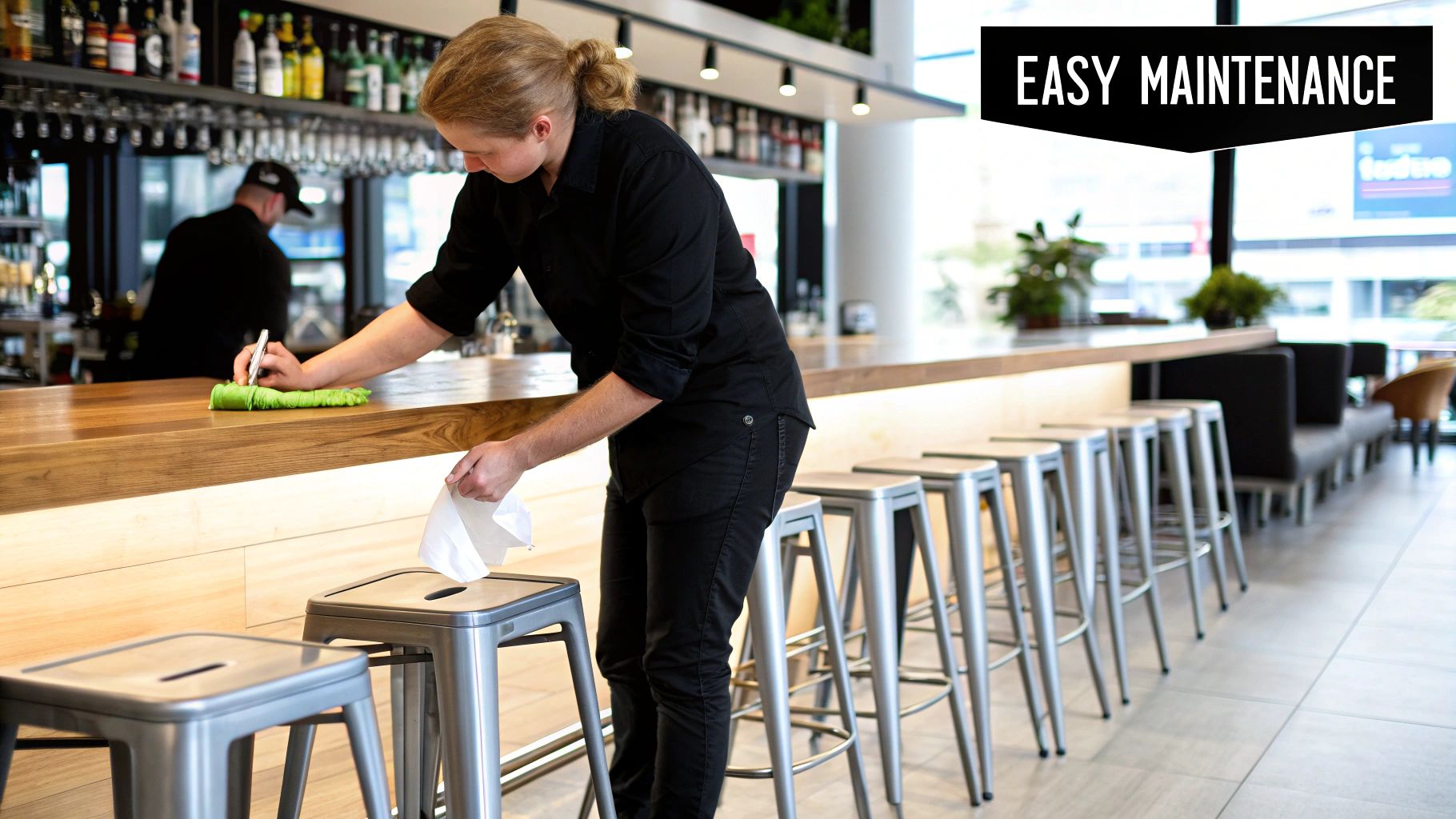
When you’re planning an event, a few questions about bar tables and chairs always seem to pop up. Getting them sorted early on is the key to creating an event space that’s both functional and has that perfect vibe. Let’s walk through some of the most common queries we hear from event planners here in Cape Town.
It’s a simple question, but one that can make or break your event’s flow and your guests’ comfort.
How Many Bar Stools Should I Hire Per Table?
For a standard round cocktail or poseur table, three to four stools is the magic number. This gives everyone enough personal space to pop their drink down and chat comfortably without feeling like they’re all crammed together.
If you’re looking at longer, rectangular high tables, you’ll want to think a bit differently. A good guideline is to allow about 60 cm of space for each person. This makes sure there’s plenty of elbow room, whether guests are grabbing a bite or networking.
What Is the Difference Between a Bar Table and a Poseur Table?
You’ll often hear these terms used interchangeably in the events world, but there’s a small difference that’s good to know.
A ‘poseur table’ is generally the smaller, taller table (around 110cm high) that’s perfect for guests to stand around and mingle. A ‘bar table’ can be a broader term that also covers those larger high-tops designed to actually seat two to four people on stools.
It’s always a good idea to double-check the exact dimensions with your hire company. Just confirming the furniture matches your vision can save you from any layout headaches on the day.
Should I Choose Stools With or Without Backs?
This really comes down to the style of your event and how long you expect your guests to be sitting.
For something like a high-energy cocktail hour where people are moving around, backless stools are ideal. They encourage mingling and take up less physical and visual space.
But, if you’re setting up a casual dining area or a VIP lounge where guests will be settled for a while, stools with backs are a must. That extra support and comfort make all the difference, encouraging people to relax and stay a while.
How Far in Advance Should I Book Furniture in Cape Town?
Cape Town’s peak season, which usually kicks off in November and runs through to March, gets incredibly busy. For big weddings or corporate functions during this time, you’ll want to book your bar tables and chairs at least two to three months in advance.
For smaller events or if you’re planning something in the off-season, you might be okay with three to four weeks’ notice. That said, booking early always gives you the best selection and peace of mind.
Ready to create an unforgettable atmosphere at your next event? ABC Hire offers a premium selection of bar tables, chairs, and other essential event furniture to bring your vision to life in Cape Town. Explore our collection and get a quote today at https://abchire.co.za.

